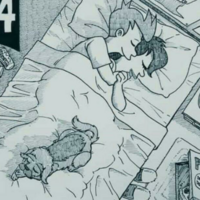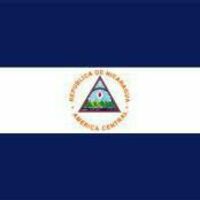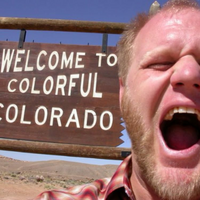
Info
Diana bathing (The Fountain)
Jean Baptiste Camille Corot
1869 – 1870
Museo Nacional Thyssen-Bornemisza
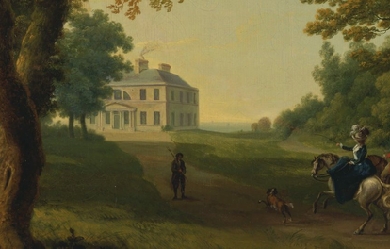
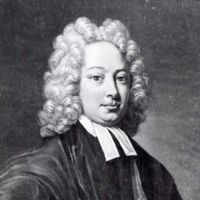
Thomas Parnell (11 September 1679– 24 October 1718) was an Anglo-Irish poet and clergyman who was a friend of both Alexander Pope and Jonathan Swift. He was the son of Thomas Parnell of Maryborough, Queen’s County (now Port Laoise, County Laoise), a prosperous landowner who had been a loyal supporter of Cromwell during the English Civil War and moved to Ireland after the restoration of the monarchy. Thomas was educated at Trinity College, Dublin and collated archdeacon of Clogher in 1705. He however spent much of his time in London, where he participated with Pope, Swift and others in the Scriblerus Club, contributing to The Spectator and aiding Pope in his translation of The Iliad. He was also one of the so-called “Graveyard poets”: his ‘A Night-Piece on Death,’ widely considered the first “Graveyard School” poem, was published posthumously in Poems on Several Occasions, collected and edited by Alexander Pope and is thought by some scholars to have been published in December of 1721 (although dated in 1722 on its title page, the year accepted by The Concise Oxford Chronology of English Literature; see 1721 in poetry, 1722 in poetry). It is said of his poetry 'it was in keeping with his character, easy and pleasing, enunciating the common places with felicity and grace. He died in Chester in 1718 on his way home to Ireland. His wife and children having died, his Laoise estate passed to his brother John, a judge and MP in the Irish House of Commons and the ancestor of Charles Stewart Parnell. Oliver Goldsmith wrote a biography of Parnell which often accompanied later editions of Parnell’s works. Works * Essay on the Different Stiles of Poetry (1713) * Battle of the Frogs and Mice (1717 translation in heroic couplets of a comic epic then attributed to Homer) * An example of his poetry is the opening stanza of his poem The Hermit References Wikipedia—https://en.wikipedia.org/wiki/Thomas_Parnell

My first memories of writing begin in elementary school when one teacher assigned our class to write a story. He made some very encouraging comments and a writer was born. I have stacks of poems and songs collected over the years. I recently began blogging and found this site and am happy to share some of my work here. I hope you will let me know when you are inspired or touched by what I share with you. You, my readers, inspire me.

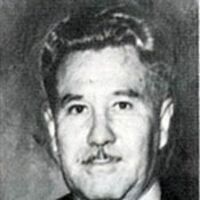
Luis Palés Matos. (Guayama, 20 de marzo de 1898 - 23 de febrero de 1959). Escritor, novelista, poeta y periodista puertorriqueño. De familia culta, inició pronto su actividad literaria y, con diecisiete años, publicó su primer libro de poemas. Sus lecturas de Julio Verne y E.T.A. Hoffmann, entre otros, le acercaron a la literatura universal, formándose como autodidacta. Más tarde dirigíó el diario El Pueblo en su ciudad natal. En San Juan trabajó para El Imparcial o Puerto Rico Ilustrado, además de otros diarios y revistas, aunque debió ganarse la vida como oficinista, repartidor, actor de teatro e incluso secretario del Presidente del Senado. Casado, su matrimonio apenas duró un año al fallecer su esposa de tuberculosis en 1919. En la capital conoció a José de Diego Padró. Ambos representarán el comienzo de la poesía de vanguardia en el país conocido como el diepalismo donde prima la sonoridad y musicalidad de los versos. En la década de 1920 participó en la actividad política convulsa de Puerto Rico, integrándose en la Alianza Puertorriqueña, siendo un activo orador independentista. En estos años desarrolló lo que sería la poesía negra o el verso negro, con una visión de la cultura negra puertorriqueña integrada dentro de la originalidad de su obra de sonidos armoniosos. La influencia que ejerció sobre otros autores de Sudamérica fue destacable, sobre todo en hombres de la talla de Nicolás Guillén. Se casó nuevamente en 1930. En las décadas de 1940 y 1950 viajó por Estados Unidos donde ofreció distintas conferencias en varias instituciones y universidades. Referencias Wikipedia – http://es.wikipedia.org/wiki/Luis_Palés_Matos
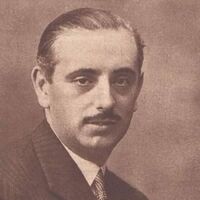
José María Pemán y Pemartín (retratos) (Cádiz, 8 de mayo de 1897 – 19 de julio de 1981) fue un escritor español. Formación Junto con su hermano César, procedía de una familia de la buena sociedad de Cádiz. Su padre fue el abogado en ejercicio y diputado conservador gaditano Juan Gualberto Pemán y Maestre (1859-1922), perteneciente a la familia política de la Restauración, y su madre María Pemartín y Carrera Laborde Aramburu, de entronque jerezano. En la fachada de la casa en que nació en Cádiz (calle Isabel La Católica nº 12) existe una gran lápida, con una figura alegórica con la estética de la época, y su busto en bajorrelieve en bronce, obra del escultor Juan Luis Vassallo. Pemán creció durante la Restauración en el seno de un orden social burgués, parlamentario pero no democrático, y quasi patriarcal (cacicato estable) considerado "natural" y, por tanto, inmutable y legítimo: «La desigualdad social (...) es una ley inexorable contra la cual es inútil luchar porque Dios así lo ha dispuesto; nuestro deber es acatar Su insondable Voluntad y resignarnos cada uno con nuestra suerte, cumpliendo estrictamente en todas circunstancias nuestros deberes cristianos, que a la postre resultará lo más provechoso para todos, no sólo en el otro Mundo, sino en éste» . Conde de Rivadavia Referencias Wikipedia – http://es.wikipedia.org/wiki/José_María_Pemán
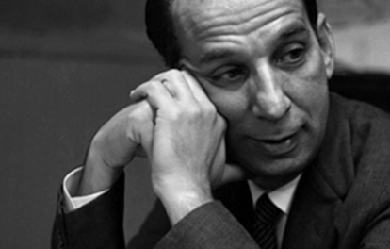
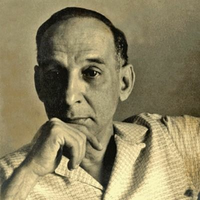
Luego de décadas de silenciamiento o relegación, el escritor cubano Virgilio Piñera (1912-1979) ocupa un sitio referencial en la literatura cubana contemporánea. Los avatares del canon nacional de las letras se cumplen, como en pocos autores latinoamericanos del siglo XX, en este poeta, dramaturgo y narrador, nacido hace 100 años en Cárdenas, Matanzas. Los atributos de Piñera que molestaban al Estado cubano, hace apenas 20 años, son los mismos que le han ganado una presencia tutelar, cada vez más discernible entre las últimas generaciones de escritores de la isla y la diáspora. Virgilio Piñera (4 de agosto de 1912, Cárdenas (Matanzas), 18 octubre de 1979 - La Habana) fue un poeta cubano. Vida Piñera cursó sus primeros estudios en su localidad natal, pero en 1925 se trasladó con su familia a pepeCamagüey, donde estudió el bachillerato. En 1938 se instaló en La Habana, en cuya universidad se doctoró en Filosofía y Letras en 1940. Ya el año anterior había empezado a publicar, sobre todo poemas, en la revista Espuela de plata, predecesora de Orígenes, en la que coincidió con José Lezama Lima. En 1941 vio la luz su primer poemario, Las furias, y ese mismo año escribió también la que es quizá su obra teatral más importante, Electra Garrigó, que se estrenó en La Habana, ocho años después, y constituyó uno de los grandes hitos del teatro cubano, para muchos críticos, como Rine Leal o Raquel Carrió, el verdadero comienzo del teatro cubano moderno. En 1942 fundó la efímera revista Poeta, de la que fue director. Al año siguiente publicó el extenso poema La isla en peso, una de las cumbres de la poesía cubana, que en su momento fue, sin embargo, objetado por grandes poetas como Gastón Baquero o Eliseo Diego y críticos como Cintio Vitier. Aunque en La isla en peso se considera en la actualidad como uno de los momentos más altos de la poesía cubana. Cuando en 1944 Lezama y Rodríguez Feo fundaron la revista Orígenes, Piñera formó parte del plantel inicial de colaboradores, a pesar de que mantenía importantes discrepancias estéticas con el grupo de poetas de la revista. Allí publicó poesía y un excelente ensayo: "El secreto de Kafka". Preparó, asimismo, un número sobre literatura argentina. En febrero de 1946 viajó a Buenos Aires, donde residió, con algunas interrupciones, hasta 1958. Allí trabajó como funcionario del consulado de su país, como corrector de pruebas y como traductor.1 En la capital argentina hizo amistad con el escritor polaco Witold Gombrowicz, y formó parte del equipo de traductores que llevaron a cabo la versión castellana de Ferdydurke. También conoció a Jorge Luis Borges, Victoria Ocampo, Graziella Peyrou y a José Bianco, quien prologó su volumen de cuentos El que vino a salvarme, publicado por la Editorial Sudamericana. Continuó colaborando con Orígenes con cuentos, ensayos y reseñas críticas. En 1948 se estrenó en La Habana Electra Garrigó, mal acogida por la crítica. Por entonces escribió otras obras teatrales: Jesús y Falsa alarma, obra considerada una de las primeras muestras de teatro del absurdo, anterior incluso a La cantante calva de Eugène Ionesco. En 1952 publicó su primera novela, La carne de René. En 1955, tras el final de Orígenes, marcado por una agria disputa entre Lezama Lima y Rodríguez Feo, fundó con este último la revista Ciclón, de gran importancia en la historia de la literatura cubana. Por entonces colaboró también con la revista argentina Sur y con las francesas Lettres Nouvelles y Les Temps Modernes. En 1958 abandonó Argentina y se instaló definitivamente en Cuba, donde viviría hasta su muerte. Tras el triunfo de la Revolución Cubana, Piñera colaboró en el periódico Revolución y en su suplemento Lunes de Revolución. En 1960 reestrenó Electra Garrigó y publicó su Teatro completo. En 1968 recibió el Premio Casa de las Américas de teatro por Dos viejos pánicos, obra que no fue estrenada en Cuba hasta principios de los años noventa. Recientemente en México ha tenido una exitosa temporada una nueva interpretación de "Electra Garrigo" titulada "El Son de Electra" bajo la dirección del destacado creador Ramón Díaz y las actuaciones de Thais Valdés y Sandra Muñoz y en La Habana ha reaparecido esta obra bajo la dirección de Roberto Blanco y últimamente de Raúl Martín con el Grupo Teatral La Luna. A partir de 1971 y hasta su muerte, Piñera sufrió un fuerte ostracismo por parte del régimen y de las instituciones culturales oficiales cubanas, en gran parte debido a una radical diferencia ideológica y a su condición sexual, ya que nunca escondió su homosexualidad.2 El famoso escritor cubano disidente Reinaldo Arenas, amigo de Piñera, cuenta ese episodio en sus memorias Antes que anochezca. Como narrador, destaca por su humor negro, dentro de la línea del absurdo. Fue también un destacado traductor, y vertió al español obras de Jean Giono, Imre Madách, Charles Baudelaire y de Witold Gombrowicz, entre muchos otros.1 Sus Cuentos completos han sido publicados por la Editorial Alfaguara. Su poesía completa, así como La carne de René, aparecieron bajo el sello de Tusquets Editores. OBRAS Poesía * 1941 - Las furias * 1943 - La isla en peso (reedición cortada en Virgilio Piñera La poesía, La Habana * 1965 - a parte de unas modificaciones mínimas, sobre todo unas correcciones ortográficas añadiendo otros errores, el cambio principal es la corte de un parágrafo sobre la masturbación; reeditado en esta versión truncada también en Virgilio Piñera 'La isla en peso. Obra poética', compilación y prólogo de Antón Arrufat, La Habana 1999 y Barcelona: Tusquets editores 2000, colección Nuevos textos sagrados; la versión original con unas pocas diferencias mínimas más se encuentra entre otros en javiergato.blogspot.com en la parte 'Taedium mundi' ) * 1944 - Poesía y prosa * 1969 - "La vida entera" * 1988 - Una broma colosal * 1994 - Poesía y crítica Cuento * 1942 - El conflicto * 1956 - Cuentos fríos * 1961- "Oficio de tinieblas" * 1970 - El que vino a salvarme * 1987 - Un fogonazo * 1987 - Muecas para escribientes * 1992 - Algunas verdades sospechosas * 1992 - El viaje * 1994 - Cuentos de la risa del horror (antología) * 2008 - Cuentos fríos. El que vino a salvarme. Edición de Vicente Cervera y Mercedes Serna Cátedra, 2008. Novela * 1952 - La carne de René, Buenos Aires, reedición (modificada) Tusquets Editores, Colección Andanzas, Barcelona, 2000. * 1963 - Pequeñas maniobras * 1967 - Presiones y diamantes * 1997 - El caso baldomero Teatro * 1959 - Electra Garrigó * 1959 - Aire frío * 1960 - Teatro completo * 1968 - Dos viejos pánicos * 1986 - Una caja de zapatos vacía * 1990 - Teatro inconcluso * 1993 - Teatro inédito Traducción * 1947 - Witold Gombrowicz Ferdydurke (traducido por Virgilio Piñera junto con Humberto Rodríguez Tomeu y Adolfo de Obieta y 'a veces veinte personas', vea Witold Gombrowicz Diarios, cap. XV, y Virgilio Piñera La vida tal cual, p. 32, donde describe como Gombrowicz le declara 'presidente del Comité de Traducción', en Unión 10 / 1990, La Habana, número dedicado a Virgilio Piñera, p. 22 - p. 35) Referencias Wikipedia – http://es.wikipedia.org/wiki/Virgilio_Piñera Cien años del nacimiento del poeta y dramaturgo cubano En su libro Inventario secreto de La Habana, Abilio Estévez relata un encuentro con Virgilio Piñera en 1979, pocos meses antes de la muerte del gran poeta cubano. En un momento de la conversación, Estévez le preguntó cuál creía que sería su destino literario post mortem. “Me publicarán, me homenajearán y seré por fin el apóstol que siempre debí ser”, disparó el autor de La carne de René con sonrisa escéptica y mirada burlona. La profecía de Piñera (Cárdenas, 1912) terminó cumpliéndose. El escritor solitario, el francotirador, el nadador a contracorriente, como lo ha definido Abilio Estévez, recibió este año un homenaje oficial en La Habana al cumplirse el centenario de su nacimiento. Pero tuvieron que pasar muchos años para que sus libros se editaran en la isla y sus obras dramáticas se representaran en los teatros cubanos. Marginado y desactivado por la Revolución durante décadas, la figura de Piñera —considerado por algunos críticos como el mejor dramaturgo cubano del siglo XX— no levantó vuelo hasta que fue reivindicada por los jóvenes creadores de los años ochenta, pero el régimen no le perdonó la disidencia intelectual de la que hizo gala toda su vida hasta hace bien poco, cuando el general Raúl Castro lo rescató del ostracismo, como si el creador de Electra Garrigó fuera una de esas “absurdas prohibiciones” que el hermano menor de Fidel se dispuso a eliminar para darle a su mandato una pátina de aperturismo. La historia podría haber sido diferente para uno de los máximos exponentes del teatro del absurdo (su Falsa alarma fue publicada en 1948, dos años antes de que Ionesco revolucionara el género con La cantante calva) si se hubiera plegado a las exigencias del guión tras el triunfo de la Revolución en 1959. Un guión que, con respecto a la política cultural, Fidel Castro esbozó en el denominado “Encuentro con los intelectuales”, tres jornadas históricas celebradas en la Biblioteca Nacional de La Habana en junio de 1961 en las que el nuevo régimen dejó sentadas las pautas por las que debía regirse el pensamiento de la época: no habría vida (intelectual) más allá del binomio patria-revolución, a saber: Martí y Fidel. Una vez derribada la dictadura de Batista, a la que se habían opuesto con más o menos ardor patriótico los intelectuales cubanos, estos buscaban su lugar en la alborada revolucionaria. Como otros, Piñera albergaba dudas y recelos sobre el nuevo papel que debía desempeñar la intelligentsia de la isla. Y así se lo hizo saber al Comandante: “Yo quiero decir que tengo mucho miedo. No sé por qué tengo ese miedo pero eso es todo lo que tengo que decir”. ¿Miedo? Piñera pronunció la palabra maldita, aquella que presidiría las relaciones entre la cultura y la Revolución (como quedó de manifiesto en el “caso Padilla” o en el “quinquenio gris”, de 1971 a 1976). Fidel respondió a las inquietudes de Padilla y otros con uno de esos discursos maratónicos que lo harían célebre (y que ha pasado a la historia como “Palabras a los intelectuales”). Y despejó incertidumbres: ¿Cuáles son los derechos de los escritores y de los artistas, revolucionarios o no revolucionarios? Dentro de la Revolución, todo; contra la Revolución, ningún derecho”. Es decir, la cultura quedaría atrapada en la isla entre la sumisión al nuevo establishment sovietizado y la “muerte civil”. Piñera, que ya había publicado sus mejores obras antes del triunfo revolucionario, editó algunos libros más en la década de los sesenta pero fue orillado poco a poco por los prebostes culturales del régimen. En 1969 publicaría su último libro en vida, bajo el curioso título de La vida entera. Desde entonces, hasta su muerte en 1979, no volvió a publicar una sola línea. Pero nunca dejó de escribir. El desdén de los dirigentes revolucionarios hacia Piñera mucho tuvo que ver con su condición de homosexual. Baste recordar que en el primer congreso de Educación y Cultura, celebrado en 1971, el régimen había definido la homosexualidad como una “patología social”. El propio Piñera ya lo había presagiado en un pasaje de La vida tal cual, sus textos autobiográficos: “No bien tuve la edad exigida para que el pensamiento se traduzca en algo más que soltar la baba y agitar los bracitos, me enteré de tres cosas: lo bastante sucias como para no poderme lavar jamás de las mismas. Aprendí que era pobre, que era homosexual y que me gustaba el arte”. El relato de Abilio Estévez sobre la vida cotidiana de ese Bartleby clandestino es estremecedor, pues nos habla de un hombre que casi raya con el indigente. Un literato devenido en menospreciado traductor que se levantaba de madrugada para escribir y, cuando el día se echaba encima, “descendía hacia los abismos de la realidad con una jaba (bolsa) de saco, una cantina de metal y un frasco de medicina vacío”. El pomo de medicina era para el “café aguado” de la cafetería Las Vegas. En la cantina de metal le servían a Piñera unos espaguetis a pelo en una pizzería de la esquina de Infanta y San Lázaro. En la jaba guardaba el escritor el pastel con sabor a manzana que había comprado tras guardar una cola de una hora en el Supercake, una pastelería abierta en Zapata y Belascoaín. “Lo único que mereció (cuando murió) —escribe Abilio Estévez— fue una nota fugaz en los periódicos oficiales, la misma nota en todos los periódicos, con aquella helada sintaxis y estudiada economía de palabras”. Tal vez, mientras aguardaba la cola en el Supercake, Piñera se repitiera a sí mismo esa letanía que susurraba a sus allegados: “Nunca debí regresar de Buenos Aires”. En la Argentina vivió el poeta 12 años de forma intermitente (1946-1958) como funcionario de la embajada cubana. Fueron tiempos fructíferos para Piñera desde el punto de vista creativo. En esos años escribe su mejor novela, La carne de René (1952) los Cuentos fríos (1956) y buena parte de sus mejores obras dramáticas, además de dirigir la revista Ciclón, la contracara del Orígenes de Lezama Lima (otro de los grandes olvidados de la Revolución). Y frecuenta a algunos de los grandes narradores argentinos de la época: Borges, Sabato, Macedonio Fernández… El autor de El Aleph tuvo a bien publicar uno de los cuentos de Piñera en uno de los números de Anales de Buenos Aires (1947). Aunque sin duda el escritor del que más cercano se sintió fue Wiltod Gombrovizc. Gracias a sus conocimientos del francés, idioma que también hablaba el autor polaco, Piñera presidió el comité que realizó en el café Rex la traducción colectiva de Ferdydurke, el artefacto literario con el que Gombrovizc saltó a la fama y que vio la luz en español en 1947. En agradecimiento, Gombrovizc nombró a su colega cubano, con ironía ubuesca, “jefe del ferdydurkismo sudamericano”. Antes de la etapa argentina, Piñera ya había publicado la que acabaría siendo su gran obra poética: La isla en peso (1943), un libro que rompe con el barroquismo de autores como Lezama o Carpentier y también con el pensamiento tradicional cubano, que otorgaba al Caribe un componente mágico-espiritual arcádico, como recuerda el escritor Damaris Calderón. La isla, para Piñera, está marcada más bien por una condición negativa, claustrofóbica, por esa “maldita circunstancia” que canta el poeta: “Esta noche he llorado al conocer a una anciana que ha vivido ciento ocho años rodeada de agua por todas partes”. Como un río subterráneo, la palabra atrapada de Virgilio Piñera no ha cesado de empapar las distintas poéticas que se han sucedido en la isla desde los años sesenta del siglo pasado. La obra narrativa de Reynaldo Arenas (la versión rebelde de Piñera), Severo Sarduy, Abilio Estévez o Antón Arrufat le debe mucho al autor de Cuentos fríos. Ensayistas jóvenes como Rafael Rojas, Antonio José Ponte o Iván de la Nuez (los tres, en el exilio) reivindican en nuestros días el inconformismo intelectual de Piñera, un rasgo distintivo en toda su obra que, para Rojas y Ponte, invalida los homenajes y las vindicaciones actuales del aparato cultural del régimen. “Los atributos de Piñera que molestaban al Estado cubano, hace apenas 20 años, son los mismos que le han dado una presencia tutelar, cada vez más discernible entre las últimas generaciones de escritores de la isla y la diáspora”, escribe Rojas. Y añade: “Un escritor como Piñera merece que (…) se piense críticamente su apropiación por parte del mismo Estado que lo marginó y lo silenció. El mismo Estado que sostiene de jure y de facto leyes e instituciones que un admirador de El pensamiento Cautivo, de Milosz, no podría aprobar”. Porque el pensamiento en la isla, como recuerda Rojas aludiendo al libro de Milosz, sigue cautivo, apresado por la tenaza del discurso único. Solo desde algunas bitácoras del ciberespacio es posible la crítica. El escritor Ángel Santiesteban (autor del blog Los hijos que nadie quiso) se preguntaba recientemente cuántos libros dejó de escribir Piñera tras ser arrumbado por el régimen: “¿De cuántos maravillosos absurdos se privó la Literatura por culpa de los gendarmes de la cultura oficial cubana?”. La huella de Piñera llena las plumas de las últimas hornadas de poetas cubanos. Juan Carlos Flores, poeta de la marginalidad, esculpe versos-martillo desde su departamento en Alamar (en el extrarradio habanero), tan austero y sencillo como aquel de las calles 27 y N en el barrio del Vedado, cuartel general de la tristeza. Flores, como otros jóvenes poetas, también ha rendido tributo al escritor solitario, al francotirador, al nadador a contracorriente y a su visión negativa de la insularidad: “Oscar Wilde tuvo su estancia gélida, el aislamiento pudo ser la tuya. A la hora anunciada por los especialistas en posteridad te convertiste en una isla, isla hundida en qué profundo y olvidado mar oscuro”. Referencias http://www.jotdown.es/2012/11/virgilio-pinera-y-el-agua-por-todas-partes/

I am a blogger, poet and writer. I own wn Monterey Consulting which examines cost centers at mainly industrial accounts and attempts to reduce cost and get paid in the process. Sometimes, I look at natural gas well cash flows to determine private well owners are getting paid properly. I am good at negotiating and is how I make money consulting. I have a 9 year old son named Joseph. I am in the midst of a divorce. It's been painful for sure. I feel so bad for my son. He's strong and resilient- handling it great on the outside. I wonder what goes on in that little head of his. I worry about him sometimes that he is getting all his parental, moral and general life guidance. What's important in this world--what's not. Things dads say. Moms too. I love learning and researching new and sometimes Paranormal type phenomena. Sometimes this research gets me into trouble, both personally and professionally:it involves military grade weapons being remotely used against Americans as a social experiment. It involves emotion manipulation, increase in sex drives, pharmaceuticals, directed brainwashing targeted media custom designed for you. Sometimes they give you your own private line to call in on. Guessing. It involves the research and study of Electromagnetic Radiation as a naturally occurring energy in nature as well as man made ie electricity I am studying various relationships between EMR and other natural and man made variables. It involves several of the sciences including Astronomy, the laws of physics, chemistry and how the principles and properties of predictable data based on current accepted formulae can be Manipulated. "It's simply cause and effect". Tbc cause however is not always as pure as it seems. There are military personnel that are part of the civilian workforce. They cause accidents to your car, they enter your car and take things pertaining to a book I am writing. Cleaned off my entire c drive as well as stole the printed copy I had in a file drawer. WTF
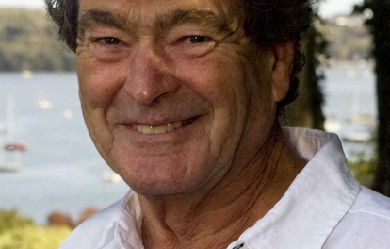
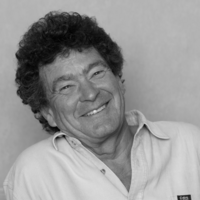
Brian Patten (born 7 February 1946) is an English poet Background Born near the Liverpool docks, Patten attended Sefton Park School in the Smithdown Road area of Liverpool, where he was noted for his essays and greatly encouraged in his work by Harry Sutcliffe, his form teacher. He left school at fifteen and began work for The Bootle Times writing a column on popular music. One of his first articles was on Roger McGough and Adrian Henri, two pop-oriented Liverpool poets who later joined Patten in a best-selling poetry anthology called The Mersey Sound, drawing popular attention to his own contemporary collections Little Johnny’s Confession (1967) and Notes to the Hurrying Man (1969). Patten received early encouragement from Philip Larkin. The collections Storm Damage (1988) and Armada (1996) are more varied, the latter featuring a sequence of poems concerning the death of his mother and memories of his childhood. Armada is perhaps Patten’s most mature and formal book, dispensing with much of the playfulness of former work. He has also written comic verse for children, notably Gargling With Jelly and Thawing Frozen Frogs. Patten’s style is generally lyrical and his subjects are primarily love and relationships. His 1981 collection Love Poems draws together his best work in this area from the previous sixteen years. Tribune has described Patten as “the master poet of his genre, taking on the intricacies of love and beauty with a totally new approach, new for him and for contemporary poetry.” Charles Causley once commented that he “reveals a sensibility profoundly aware of the ever-present possibility of the magical and the miraculous, as well as of the granite-hard realities. These are undiluted poems, beautifully calculated, informed– even in their darkest moments– with courage and hope.” Patten writes extensively for children as well as adults. He has been described as a highly engaging performer, and gives readings frequently. Over the years he has read alongside such poets as Pablo Neruda, Allen Ginsberg, Stevie Smith, Laurie Lee and Robert Lowell. His books have in recent years been translated into Italian, Spanish, German and Polish. His children’s novel Mr Moon’s Last Case won a special award from the Mystery Writers of America Guild. In 2002 Patten accepted the Cholmondeley Award for services to poetry. Together with Roger McGough and the late Adrian Henri, he was honoured with the Freedom of the City of Liverpool. Selected bibliography Poetry collections for adults * The Mersey Sound * Little Johnny’s Confession * Notes to the Hurrying Man * The Irrelevant Song * Vanishing Trick * Grave Gossip * Love Poems * Storm Damage * Grinning Jack * Armada * Selected Poems Penguin Books * The new Collected Love Poems * The projectionist’s nightmare * Geography lesson Books for children * The Elephant and the Flower * Jumping Mouse * Emma’s Doll * Gargling With Jelly * Mr Moon’s Last Case * Jimmy Tag-Along * Thawing Frozen Frogs * Juggling With Gerbils * The Story Giant * Impossible Parents, illustrated by Arthur Robins (Walker Books, 1994), OCLC 31708253 * The Impossible Parents Go Green, illus. Robins (Walker, 2000) * The Most Impossible Parents, illus. Robins (Walker, 2010) As editor * The Puffin Book of Utterly Brilliant Poetry * The Puffin Book of Modern Children’s Verse References Wikipedia—https://en.wikipedia.org/wiki/Brian_Patten
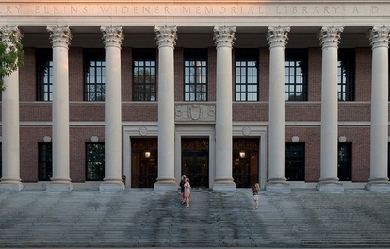
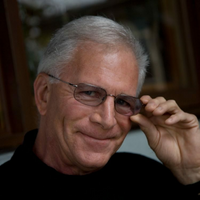
Michael Palmer (born May 11, 1943) is an American poet and translator. He attended Harvard University where he earned a BA in French and an MA in Comparative Literature. He has worked extensively with Contemporary dance for over thirty years and has collaborated with many composers and visual artists. Palmer has lived in San Francisco since 1969. Palmer is the 2006 recipient of the Wallace Stevens Award from the Academy of American Poets. This $100,000 (US) prize recognizes outstanding and proven mastery in the art of poetry. Beginnings Michael Palmer began actively publishing poetry in the 1960s. Two events in the early sixties would prove particularly decisive for his development as a poet. First, he attended the now famous Vancouver Poetry Conference in 1963. This July–August 1963 Poetry Conference in Vancouver, British Columbia spanned three weeks and involved about sixty people who had registered for a program of discussions, workshops, lectures, and readings designed by Warren Tallman and Robert Creeley as a summer course at the University of B.C. There Palmer met writers and artists who would leave an indelible mark on his own developing sense of a poetics, especially Robert Duncan, Robert Creeley, and Clark Coolidge, with whom he formed lifelong friendships. It was a landmark moment as Robert Creeley observed: Vancouver Poetry Conference brought together for the first time, a decisive company of then disregarded poets such as Denise Levertov, Charles Olson, Allen Ginsberg, Robert Duncan, Margaret Avison, Philip Whalen... together with as yet unrecognised younger poets of that time, Michael Palmer, Clark Coolidge and many more.” Palmer’s second initiation into the rites of a public poet began with the editing of the journal Joglars with fellow poet Clark Coolidge. Joglars (Providence, Rhode Island) numbered just three issues in all, published between 1964–66, but extended the correspondence with fellow poets begun in Vancouver. The first issue appeared in Spring 1964 and included poems by Gary Snyder, Michael McClure, Fielding Dawson, Jonathan Williams, Lorine Niedecker, Robert Kelly, and Louis Zukofsky. Palmer published five of his own poems in the second number of Joglars, an issue that included work by Larry Eigner, Stan Brakhage, Russell Edson, and Jackson Mac Low. For those who attended the Vancouver Conference or learned about it later on, it was apparent that the poetics of Charles Olson, proprioceptive or Projectivist in its reach, was exerting a significant and lasting influence on the emerging generation of artists and poets who came to prominence in the 1950s and 1960s. Subsequent to this emerging generation of artists who felt Olson’s impact, poets such as Robert Creeley and Robert Duncan would in turn exert their own huge impact on our national poetries (see also: Black Mountain poets and San Francisco Renaissance). Of this particular company of poets encountered in Vancouver, Palmer says: ...before meeting that group of poets in 1963 at the Vancouver Poetry Conference, I had begun to read them intensely, and they proposed alternatives to the poets I was encountering at that time at Harvard, the confessional poets, whose work was grounded to a greater or lesser degree in New Criticism, at least those were their mentors. The confessional poets struck me as people absolutely lusting for fame, all of them, and they were all trying to write great lines. Early development of poetry and poetics Following the Vancouver Conference, Robert Duncan and Robert Creeley remained primary resources. Both poets had a lasting, active influence on Palmer’s work which has extended until the present. In an essay, “Robert Duncan and Romantic Synthesis” (see 'External links’ below), Palmer recognizes that Duncan’s appropriation and synthesis of previous poetic influences was transformed into a poetics noted for “exploratory audacity... the manipulation of complex, resistant harmonies, and by the kinetic idea of ”composition by field", whereby all elements of the poem are potentially equally active in the composition as 'events’ of the poem". And if this statement marks a certain tendency readers have noted in Palmer’s work all along, or remains a touchstone of sorts, we sense that from the beginning Palmer has consistently confronted not only the problem of subjectivity and public address in poetry, but the specific agency of Poetry and the relationship between poetry and the political: "The implicit... question has always concerned the human and social justification for this strange thing, poetry, when it is not directly driven by the political or by some other, equally other evident purpose [...] Whereas the significant artistic thrust has always been toward artistic independence within the world, not from it.” So for Michael Palmer, this tendency seems there from the beginning. Today these concerns continue through multiple collaborations across the fields of poetry, dance, translation, and the visual arts. Perhaps similar to Olson’s impact on his generation, Palmer’s influence remains singular and palpable, if difficult to measure. Since Olson’s death in 1970, we continue to be, following upon George Oppen’s phrase, carried into the incalculable, As Palmer recently noted in a blurb for Claudia Rankine’s poetic testament Don’t Let Me Be Lonely (2004), ours is “a time when even death and the self have been re-configured as commodities”. Work Palmer is the author of twelve full-length books of poetry, including Thread (2011), Company of Moths (2005) (shortlisted for the 2006 Canadian Griffin Poetry Prize), Codes Appearing: Poems 1979-1988 (2001), The Promises of Glass (2000), The Lion Bridge: Selected Poems 1972-1995 (1998), At Passages (1996), Sun (1988), First Figure (1984), Notes for Echo Lake (1981), Without Music (1977), The Circular Gates (1974), and Blake’s Newton (1972). A prose work, The Danish Notebook, was published in 1999. In the spring of 2007, a chapbook, The Counter-Sky (with translations by Koichiro Yamauchi), was published by Meltemia Press of Japan, to coincide with the Tokyo Poetry and Dance Festival. His work has appeared in literary magazines such as Boundary 2, Berkeley Poetry Review, Sulfur, Conjunctions, Grand Street and O-blek. Besides the 2006 Wallace Stevens Award, Michael Palmer’s honors include two grants from the Literature Program of the National Endowment for the Arts. In 1989-90 he was a Guggenheim Fellow. During the years 1992–1994 he held a Lila Wallace-Reader’s Digest Fund Writer’s Award. From 1999 to 2004, he served as a Chancellor of the Academy of American Poets. In the spring of 2001 he received the Shelly Memorial Prize Prize from the Poetry Society of America. Introducing Palmer for a reading at the DIA Arts Center in 1996, Brighde Mullins noted that Palmer’s poetics is both “situated yet active”. Palmer alludes to this himself, perhaps, when he speaks of poetry signaling a “site of passages”. He says, “The space of the page is taken as a site in itself, a syntactical and visual space to be expressively exploited, as was the case with the Black Mountain poets, as well as writers such as Frank O’Hara, perhaps partly in response to gestural abstract painting.” Elsewhere he observes that “in our reading we have to rediscover the radical nature of the poem.” In turn, this becomes a search for “the essential place of lyric poetry” as it delves “beneath it to its relationship with language”. Since he seems to explore the nature of language and its relation to human consciousness and perception, Palmer is often associated with the Language poets (sometimes referred to as the L=A=N=G=U=A=G=E poets, after the magazine that bears that name). Of this particular association, Palmer comments in a recent (2000) interview: It goes back to an organic period when I had a closer association with some of those writers than I do now, when we were a generation in San Francisco with lots of poetic and theoretical energy and desperately trying to escape from the assumptions of poetic production that were largely dominant in our culture. My own hesitancy comes when you try to create, let’s say, a fixed theoretical matrix and begin to work from an ideology of prohibitions about expressivity and the self—there I depart quite dramatically from a few of the Language Poets. Critical reception Michael Palmer’s poetry has received both praise and criticism over the years. Some reviewers call it abstract. Some call it intimate. Some call it allusive. Some call it personal. Some call it political. And some call it inaccessible. While some reviewers or readers may value Palmer’s work as an “extension of modernism”, they criticize and even reject Palmer’s work as discordant: an interruption of our composure (to invoke Robert Duncan’s phrase). Palmer’s own stated poetics will not allow or settle for “vanguard gesturalism”. In a singular confrontion with the modernist project, the poet must suffer 'loss’, embrace disturbance and paradox, and agonize over what cannot be accounted for. It is a poetry that can, at once, gesture toward post-modern, post-avant-garde, semiotic concerns even as it acknowledges that ...the artist after Dante’s poetics, works with all parts of the poem as polysemous, taking each thing of the composition as generative of meaning, a response to and a contribution to the building form.[...]But this putting together and rendering anew operates in our own apprehension of emerging articulations of time. Every particular is an immediate happening of meaning at large; every present activity in the poem redistributes future as well as past events. This is a presence extended in a time we create as we keep words in mind.” We can recognize that the “weary beauty” of Palmer’s work bespeaks the tension and accord he offers toward the Modernists and the vanguardists, even as he is seeking to maintain or at least continue to search for an ethics of the I/Thou. It is an awkward truce we make with modernism when there is no cessation of hostilities. But sometimes in reading Palmer’s work we recognize (almost against ourselves) a poetry that is described as surreal in context and contour, livid in aural accomplishment, but all the while confronts the reader with a poetics both active and situated. And if Palmer is sometimes praised for this, more often than not he is criticized, rebuked, vilified and dismissed (just as Paul Celan was) for hermeticism, deliberate obscurity, and bogus erudition. Palmer admits to a stated “essential errancy of discovery in the poem” that would not necessarily be a “unified narrative explanation of the self”, but would allow for itself “cloaked meaning and necessary semantic indirection” Confrontation with Modernism He remains candid about the giants of modernism: i.e., Yeats, Eliot and Pound. Whether it is the fascism of Ezra Pound or the less overt but no less insidious anti-semitism found in the work of T. S. Eliot, Palmer’s position is a fierce rejection of their politics, but qualified with the acknowledgment that, as Marjorie Perloff has observed of Pound, “he remains the great inventor of the period, the poet who really MADE THINGS NEW”. Thus, Palmer decries that what remains for us is something quite harrowing “inscribed at the heart of modernism”. Perhaps we can invoke one of Palmer’s real 'heroes’, Antonio Gramsci, and say here, now, what precisely has been inscribed over against what today (in the vicious circles of media and cultural production) is merely forecast as cultural hegemony. So if Palmer, on the one hand, variously describes or defines an Ideology as that which “invades the field of meaning”, we recognize not only in Pound or Eliot, but now as if against ourselves, that ideology implicitly deploys values and premises that must remain unspoken in order for them to function as ideology or to remain hidden in plain sight, as such. At some point we can invoke the 'post-ideological’ stance of Slavoj Žižek who, after Althusser, jettisons the Marxist equation: ideology=false consciousness and say that, perhaps Ideology, to all intents and purposes, IS consciousness. As a way out of this seeming double-bind, or to his admissions that poetry is, as Pound observed, “news that stays news”, that it remains an active and viable (or “actively situated”) principle within the social dynamic, critics and readers alike point to Palmer’s own avowals of an emerging countertradition to the prevailing literary establishment: an 'alternative tradition’ that just slipped under the radar as far as the Academy and its various 'schools’ of poetry are concerned. Though not always so visible, this counter-tradition continues to exert an underground influence. Poetry, as critique or praise, can perhaps in its reach exceed the grasp of modernism and procure for us as visible again, that which is all or nothing except for the 'ghostlier demarcations’ of the social wager within sight of the shipwreck of the singular (as George Oppen characterized it) which denotes or delimits the very idea of the social, if not the very idea that there is a definition of the social other than this: the community of those who have no community. Indeed, the unavowable community (to borrow a title and phrasing from Maurice Blanchot). Faced with shipwreck, “in the dark” amidst the ravished heresies of the unspoken as even against silence itself, we can think with the poem. With fierce determination or graceful adherence we can perhaps even “see” with the poem, account for its usefulness. Even as we use the language, attend to its fissures and abhorrences, language in turn uses us, or has its own uses for us, as Palmer attests: Palmer has repeatedly stated, in interviews and in various talks given across the years, that the situation for the poet is paradoxical: a seeing which is blind, a “nothing you can see”, an “active waiting”, “purposive, sometimes a music”, or a “nowhere” that is "now / here". For Palmer, it is a situation which is never over, and yet it mysteriously starts up again each day, as if describing a circle. Poetry can “interrogate the radical and violent instability of our moment, asking where is the location of culture, where the site of self, selves, among others” (as Palmer has characterized the poetry of Myung Mi Kim). Collaborations Palmer has published translations from French, Russian and Brazilian Portuguese, and has engaged in multiple collaborations with painters. These include the German painter Gerhard Richter, French painter Micaëla Henich, and Italian painter Sandro Chia. He edited and helped translate Nothing The Sun Could Not Explain: Twenty Contemporary Brazilian Poets (Sun & Moon Press, 1997). With Michael Molnar and John High, Palmer helped edit and translate a volume of poetry by the Russian poet Alexei Parshchikov, Blue Vitriol (Avec Books, 1994). He also translated “Theory of Tables” (1994), a book written by Emmanuel Hocquard, a project that grew out of Hocquard’s translations of Palmer’s “Baudelaire Series” into French. Palmer has written many radio plays and works of criticism. But his lasting significance occurs as the singular concerns of the artist extend into the aleatory, the multiple, and the collaborative. Dance For more than thirty years he has collaborated on over a dozen dance works with Margaret Jenkins and her Dance Company. Early dance scenarios in which Palmer participated include Interferences, 1975; Equal Time, 1976; No One but Whitington, 1978; Red, Yellow, Blue, 1980, Straight Words, 1980; Versions by Turns, 1980; Cortland Set, 1982; and First Figure, 1984. A particularly noteworthy example of a recent Jenkins/Palmer collaboration would be The Gates (Far Away Near), an evening-length dance work in which Palmer worked with not only Ms. Jenkins, but also Paul Dresher and Rinde Eckert. This was performed in September 1993 in the San Francisco Bay Area and in July 1994 at New York’s Lincoln Center. Another recent collaboration with Jenkins resulted in “Danger Orange”, a 45-minute outdoor site-specific performance, presented in October 2004 before the Presidential elections. The color orange metaphorically references the national alert systems that are in place that evoke the sense of danger.[see also:Homeland Security Advisory System] Painters and visual artists Similar to his friendship with Robert Duncan and the painter Jess Collins, Palmer’s work with painter Irving Petlin remains generative. Irving’s singular influence from the beginning demonstrated for Palmer a “working” of the poet as “maker” (in the radical sense, even ancient sense of that word). Along with Duncan, Zukofsky, and others, Petlin’s work modeled, demonstrated, circumscribed and, perhaps most importantly for Palmer, verified that “the way” (this way for the artist who is a maker, a creator) would also be, as Gilles Deleuze termed it, “a life”. This in turn delineates Palmer’s own sense of both a poetics and an ongoing counter-poetic tradition, offering him fixture and a place of repair. Recently he worked with painter and visual artist Augusta Talbot, and curated her exhibition at the CUE Art Foundation (March 17 –April 23, 2005). When asked in an interview how collaboration has pushed the boundaries of his work, Palmer responded: There were a variety of influences. One was that, when I was using language—but even when I wasn’t, when I was simply envisioning a structure, for example—I was working with the idea of actual space. Over time, my own language took on a certain physicality or gestural character that it hadn’t had as strongly in the earliest work. Margy (Margaret Jenkins) and I would often work with language as gesture and gesture as language—we would cross these two media, have them join at some nexus. And inevitably then, as I brought certain characteristics of my work to dance, and to dance structure and gesture, it started crossing over into my work. It added space to the poems. It may be that for Palmer, friendship (acknowledging both the multiple and collaborative), becomes in part what Jack Spicer terms a “composition of the real”. Across the fields of painting and dance, Palmer’s work figures as an “unrelenting tentacle of the proprioceptive”. Furthermore, it may signal a Coming Community underscored in the work of Giorgio Agamben, Jean-Luc Nancy and Maurice Blanchot among others. It is a poetry that would, along with theirs, articulate a place for, even spaces where, both the “poetic imaginary” is constituted and a possible social space is envisioned. As Jean-Luc Nancy has written in The Inoperative Community (1991): “These places, spread out everywhere, yield up and orient new spaces... other tracks, other ways, other places for all who are there.” Bibliography Poetry * Plan of the City of O, Barn Dreams Press (Boston, Massachusetts), 1971. * Blake’s Newton, Black Sparrow Press (Santa Barbara, California), 1972. * C’s Songs, Sand Dollar Books (Berkeley, California), 1973. * Six Poems, Black Sparrow Press (Santa Barbara, California), 1973. * The Circular Gates, Black Sparrow Press (Santa Barbara, California), 1974. * (Translator, with Geoffrey Young) Vicente Huidobro, Relativity of Spring: 13 Poems, Sand Dollar Books (Berkeley, California), 1976. * Without Music, Black Sparrow Press (Santa Barbara, California), 1977. * Alogon, Tuumba Press (Berkeley, California), 1980. * Notes for Echo Lake, North Point Press (Berkeley, California), 1981. * (Translator) Alain Tanner and John Berger, Jonah Who Will Be 25 in the Year 2000, North Atlantic Books (Berkeley, California), 1983. * First Figure, North Point Press (Berkeley, California), 1984. * Sun, North Point Press (Berkeley, California), 1988. * At Passages, New Directions (New York, New York), 1995. * The Lion Bridge: Selected Poems, 1972-1995, New Directions (New York, New York), 1998. * The Promises of Glass, New Directions (New York, New York), 2000. * Codes Appearing: Poems, 1979-1988, New Directions (New York, New York), 2001. Notes for Echo Lake, First Figure, and Sun together in one volume. ISBN 978-0-8112-1470-4 * (With Régis Bonvicino) Cadenciando-um-ning, um samba, para o outro: poemas, traduções, diálogos, Atelieì Editorial (Cotia, Brazil), 2001. * Company of Moths, New Directions (New York, New York), 2005. ISBN 978-0-8112-1623-4 * Aygi Cycle, Druksel (Ghent, Belgium), 2009 (chapbook with 10 new poems, inspired by the Russian poet Gennadiy Aygi. * (With Jan Lauwereyns) Truths of Stone, Druksel (Ghent, Belgium), 2010. * Thread, New Directions (New York, New York), 2011. ISBN 978-0-8112-1921-1 * The Laughter of the Sphinx, New Directions (New York, New York), 2016. ISBN 978-0-8112-2554-0 Other * Idem 1-4 (radio plays), 1979. * (Editor) Code of Signals: Recent Writings in Poetics, North Atlantic Books (Berkeley, California), 1983. * The Danish Notebook, Avec Books (Penngrove, California), 1999—prose/memoir * Active Boundaries: Selected Essays and Talks, New Directions (New York, New York), 2008. ISBN 0-8112-1754-X External links Palmer sites and exhibits * Exhibit at The Academy of American Poets includes links to on-line poems by Palmer not listed below * Modern American Poetry site * Author Page at Internationales Literatufestival Berlin site (in English) Palmer was a guest of the ILB (Internationales Literatufestival Berlin/ Germany) in 2001 and 2005. * An internet bibliography for Michael Palmer from LiteraryHistory.com Poems * “Dream of a Language That Speaks” a poem from Company of Moths (2005) @ Jacket Magazine site * “Scale” first published in Richter 858 (ed. David Breskin, The Shifting Foundation, SF MOMA: San Francisco Museum of Modern Art); included in Company of Moths * "Autobiography 3" & Autobiography 5" two poems from Conjunctions magazine’s on-line archive; included in The Promises of Glass (2000) * To the Title (Are there titles?) included in Jacket Magazine 33 * four poems from Thread from Boston Review’s March/April 2010 issue * Late Night Poetry @ Tony Bilson’s Number One: Palmer reads “The Dream of Narcissus” on YouTube Video of Palmer at the 2010 Sydney (Australia) Writers Festival. * Michael Palmer reads Mahmoud Darwish’s “The Strangers’ Picnic” on YouTube Video of Palmer reading a poem from Mahmoud Darwish’s collection Unfortunately, It Was Paradise: Selected Poems * Michael Palmer, Paul Hoover with the poetry of Maria Baranda - September 27, 2015– Palmer reads from his book Thread and from his forthcoming collection The Laughter of the Sphinx. He also reads a single poem from his collection The Company of Moths. Selected essays and talks * Period (senses of duration) this is a version of a talk Palmer gave in San Francisco in February 1982. Scroll down to “Table of Contents” to find the Palmer selection. Here it appears in an e-book representation of Code of Signals (which Palmer edited in 1983, with the subtitle “Recent Writings in Poetics”). * On Robert Duncan reprint of Palmer’s essay “Robert Duncan and Romantic Synthesis” * Michael Palmer audio-files at PENNsound * “On the Sustaining of Culture in Dark Times” text of Palmer’s keynote address given at the 3rd Annual Sustainable Living Conference at Evergreen State College in February 2004 * “Ground Work: On Robert Duncan” Michael Palmer’s “Introduction” to a combined edition of Ground Work: Before the War, and Ground Work II: In the Dark, published by New Directions in April 2006. * Lunch Poems reading by Michael Palmer: Webcast Held on October 5, 2006, in the Morrison Library, University of California at Berkeley: webcast online * “In Company: On Artistic Collaboration and Solitude” This is the title of the lecture/talk that Palmer gave, along with a poetry reading, at the University of Chicago in October 2006. (In audio & video format) * Bad to the bone: What I learned outside Lecture & Talk given in June 2002, when Palmer taught for a brief stint at the Jack Kerouac School of Disembodied Poetics at Naropa in Boulder, Colorado * Poetic Obligations (Talking about Nothing at Temple) This is a talk Palmer gave at Temple University in February 1999, and was originally published in Fulcrum: An annual of poetry and aesthetics (Issue 2, 2003). * Poetry and Contingency: Within a Timeless Moment of Barbaric Thought essay/talk originally published in the Chicago Review (June, 2003) Interviews with Palmer * The River City Interview conducted by Paul Naylor, Lindsay Hill, and J. P. Craig; appeared in 1994. * An Interview with Michael Palmer by Robert Hicks in 2006 * Interview at Berkeley Daily Planet: April 7, 2006 discusses a reading Palmer & Douglas Blazek gave together at Moe’s, a bookstore in Berkeley, California; includes interviews * Interview with Michael Palmer an interview conducted at Washington University in St. Louis in 2008 by the student editors of “Arch Literary Journal” in conjunction with a talk and reading Palmer gave at the school. Includes an introductory essay by one of the editors, Lawrence Revard, “'What Reading?': Play in Michael Palmer’s Poetics” * “An interview with Michael Palmer”. Litshow.com. 2013-02-13. Retrieved 2013-04-23. Others on Palmer * Margaret Jenkins Dance Company info on both Palmer & his collaborators in their on-going work with Dance * Lauri Ramey:"Michael Palmer: The Lion Bridge" Ramey wrote a doctoral dissertation on Palmer, and here reviews his “Selected Poems” * A Collision of “Possible Worlds” A 2002 review of The Promises of Glass by Michael Dowdy @Free Verse website * A review of Company of Moths a book review of Palmer’s 2005 collection * Griffin Poetry Prize biography, including audio and video clips Palmer was shortlisted for this prize in 2006 * Margaret Jenkins Dance Company’s “A Slipping Glimpse” 2006 dance piece in collaboration with Tanushree Shankar Dance School & the text by Palmer * Cultural camaraderie article from Hindustantimes.com on the dance performance A Slipping Glimpse. Article discusses Palmer’s collaboration (includes quotes) * Palmer is Spring 2007 Writer in Residence press release from California College of the Arts * Michael Palmer (Six Introductions) a brief essay by Clayton Eshleman who edited Sulfur magazine, for which Palmer served as a contributing editor. * Hands Across Many Seas: From San Francisco and India, a dance collaboration article by Deborah Jowitt on “A Slipping Glimpse”, performed by the Margaret Jenkins Dance Company at the “Danspace Project” at Saint Mark’s Church, October 4 through 6, 2007 * Lyric Persuasions at Poets House Rae Armantrout and Zoketsu Norman Fischer discuss Michael Palmer’s work as recorded by Vasiliki Katsarou at the Poet’s House in the Spring of 2010 References Wikipedia—https://en.wikipedia.org/wiki/Michael_Palmer_(poet)
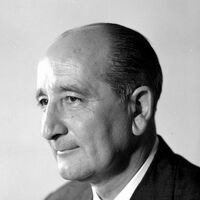
Leopoldo Panero Torbado (Astorga, León, 17 de octubre de 1909 – Castrillo de las Piedras, León, 27 de agosto de 1962) fue un poeta español, miembro de la Generación del 36, dentro de la corriente de la Poesía arraigada de posguerra. Fue hermano del poeta Juan Panero (1908–1937) y padre de Juan Luis Panero (1942), Leopoldo María Panero (1948) y Michi Panero (1951–2004), los dos primeros también poetas. Estuvo casado con Felicidad Blanc (1913–1990). Pasó toda su infancia en Astorga; hizo la Enseñanza Media en San Sebastián y León, y estudió Derecho en las Universidades de Valladolid y Madrid; en esta última se licenció. Sus primeros versos los publicó en Nueva Revista, de Madrid, que él mismo fundó y que publicó sus obras Crónica cuando amanece (1929) y Poema de la niebla (1930). En el otoño de 1929 enfermó de tuberculosis y fue a reponerse al Sanatorium Royal de la Sierra de Guadarrama durante ocho meses y se enamoró de otra paciente, Joaquína Márquez, fallecida algunos meses después. Amplió estudios en Cambridge (1932 a 1934) y en Tours y Poitiers (1935), impregnándose de literatura inglesa y francesa. Publicó en Caballo Verde para la poesía, revista dirigida por Pablo Neruda. Durante la Guerra Civil Panero fue arrestado, conducido a San Marcos de León y acusado de recaudar fondos para Socorro Rojo, pero la mediación de su madre, de Miguel de Unamuno y de Carmen Polo, esposa de Francisco Franco, le evitó males mayores y volvió a Astorga en noviembre. En 1937 murió su hermano Juan, también poeta, en un accidente de automóvil, hecho que le hirió profundamente, transformándole en un conservador; sobre este hecho y en su memoria escribió Adolescente en sombra (1938). En el año 1941 se casó con Felicidad Blanc,1 escritora, de la que tuvo tres hijos, Juan Luis (1942), Leopoldo María (1948) y Michi, los dos primeros también poetas. Durante la guerra entró en Falange Española, y después le nombraron agregado cultural a la Embajada española (1939) y director del Instituto Español (1945–1947) en Londres. Allí conoció y trató a alguno de los más insignes exiliados como Luis Cernuda o Esteban Salazar Chapela, director a su vez del otro Instituto de España, dependiente de la República. A finales de 1949 y comienzos de 1950, participó de la "misión poética"2 con los poetas Antonio Zubiaurre, Luis Rosales y el Embajador Agustín de Foxá, que recorrió diferentes países iberoamericanos (entre otros Honduras) previo al restablecimiento de relaciones diplomáticas entre estos países y el régimen de Franco. Publicó una Antología de la poesía hispanoamericana (1941); publicó también en la revista Escorial (1940) de Madrid, especialmente en sus números 5 y 15, y en Garcilaso. Juventud creadora (1943–1946) y en Haz (1944), también de Madrid. Su libro Versos del Guadarrama, inspirado en el amor perdido de Joaquina Márquez, se publicó en Fantasía, suplemento de La Estafeta Literaria (1945), también de Madrid. Pasa grandes temporadas en esta última ciudad, donde frecuenta la tertulia del Café Lyon, donde entabla amistad, entre otros, con Luis Rosales, Luis Felipe Vivanco y Gerardo Diego, tertulia que se fundió más tarde con la de Manuel Machado. En 1949 recibió el Premio Fastenrath de la Academia por su libro Escrito a cada instante, y al año siguiente el Premio Nacional de Literatura. Más tarde publicó en la revista Poesía Española (1952–1971). Dirigió la revista Correo Literario y figuró en (1952) como organizador de las Exposiciones Bienales de Arte. Fue secretario de una sección del Instituto de Cultura Hispánica. En 1960 publicó Cándida puerta, considerada una de sus obras maestras. Murió dos años después. Sus primeros versos experimentan el influjo de la Generación del 27 y de las Vanguardias; hay ecos de las estéticas del dadaísmo y del surrealismo, así como uso de verso libre. Tras la Guerra Civil abandonó estos conatos transgresores y escribió poemas dentro de la estética del garcilasismo, intimistas, en que el concepto se equilibra perfectamente con la emoción y la forma, de temática conservadora y religiosa. Los autores que inspiran esta segunda fase son Miguel de Unamuno y Antonio Machado. Destacan entre sus libros de poemas La estancia vacía (1944), Versos al Guadarrama (1945), Escrito a cada instante (1949), donde aparecen sus famosas elegías a César Vallejo, que estuvo en su casa invitado por él durante unos días, y a Federico García Lorca; Canto personal (1953), réplica al Canto General de Pablo Neruda escrita en tercetos al que puso prólogo Dionisio Ridruejo, que recibió el Premio 18 de Julio de manos del ministro Raimundo Fernández-Cuesta, y Cándida puerta (1960); en el póstumo Poesía (1963) se recoge toda su obra lírica, y sus Obras completas se imprimieron en 1973. Hizo excelentes traducciones de románticos ingleses. Javier Huerta Calvo ha preparado unas segundas Obras completas (2008) en tres volúmenes, dos de poesía y uno de prosa, por encargo del Ayuntamiento de Astorga, que recogen algunos textos más que las de 1973. Murió en su casa de Castrillo de las Piedras, tras sufrir una angina de pecho mientras regresaba en su vehículo. Poesía * La estancia vacía (fragmentos), M., Revista Fantasía, 1945. * Versos del Guadarrama. Poesía 1930–1939, M., Revista Fantasía, 1945. * Escrito a cada instante, M., Cultura hispánica, 1949 (Premio Nacional de Literatura). * Canto personal. Carta perdida a Pablo Neruda, M., Cultura hispánica, 1953. * Poesía. 1932–1960, M., Cultura Hispánica, 1963 (Prólogo de Dámaso Alonso). * Obra completa, M., Edit. Nacional, 1973. ISBN 978-84-276-1119-1 * Antología de Leopoldo Panero, Barcelona, Plaza & Janés Editores, 1977. ISBN 978-84-01-80928-6 * Por donde van las águilas, Albolote, Editorial Comares, S. L., 1994, ISBN 978-84-8151-098-0 Referencias wikipedia - http://es.wikipedia.org/wiki/Leopoldo_Panero
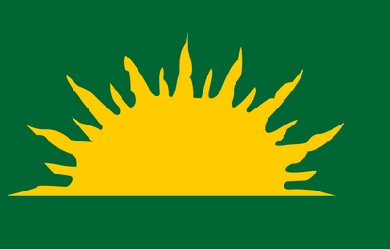
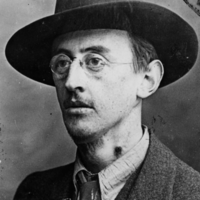
Joseph Mary Plunkett (Irish: Seosamh Máire Pluincéid, 21 November 1887– 12 May 1916) was an Irish nationalist, poet, journalist, and a leader of the 1916 Easter Rising. He was born at 26 Upper Fitzwilliam Street in one of Dublin’s most affluent neighbourhoods. Both his parents came from wealthy backgrounds, and his father, George Noble Plunkett, had been made a papal count. Despite being born into a life of privilege, young Joe Plunkett did not have an easy childhood.
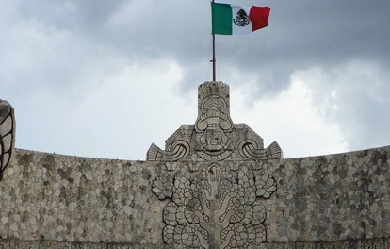
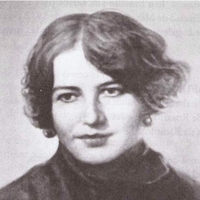
Rosario Sansores Prén (Mérida, Yucatán; 25 de agosto de 1889 — Ciudad de México; 7 de enero de 1972) fue una poetisa mexicana, conocida por obras como "Cuando tú te hayas ido", poema que sirvió de base al pasillo "Sombras", musicalizado por el compositor ecuatoriano Carlos Brito Benavides. Nació en un hogar acaudalado, hija de Juan Ignacio Sansores Escalante y Laura Prén Cámara, quienes intentaron disuadirla de escribir poesía a corta edad. A los catorce años de edad se casó con el cubano Antonio Sangenis y se mudó a La Habana, donde viviría por veintitrés años. Durante el tiempo que vivió en Cuba se dedicó a escribir artículos sobre temas sociales en periódicos y revistas. En 1911 empezó a publicar sus libros de poesía, la mayoría firmados con seudónimos
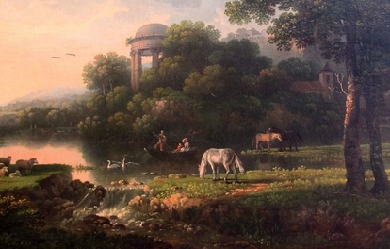
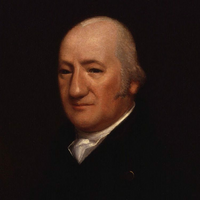
Henry James Pye (/paɪ/; 10 February 1744– 11 August 1813) was an English poet. Pye was Poet Laureate from 1790 until his death. He was the first poet laureate to receive a fixed salary of £27 instead of the historic tierce of Canary wine (though it was still a fairly nominal payment; then as now the Poet Laureate had to look to extra sales generated by the prestige of the office to make significant money from the Laureateship). Life Pye was born in London, the son of Henry Pye of Faringdon House in Berkshire, and his wife, Mary James. He was the nephew of Admiral Thomas Pye. He was educated at Magdalen College, Oxford. His father died in 1766, leaving him a legacy of debt amounting to £50,000, and the burning of the family home further increased his difficulties. In 1784 he was elected Member of Parliament for Berkshire. He was obliged to sell the paternal estate, and, retiring from Parliament in 1790, became a police magistrate for Westminster. Although he had no command of language and was destitute of poetic feeling, his ambition was to obtain recognition as a poet, and he published many volumes of verse. Of all he wrote his prose Summary of the Duties of a Justice of the Peace out of Sessions (1808) is most worthy of record. He was made poet laureate in 1790, perhaps as a reward for his faithful support of William Pitt the Younger in the House of Commons. The appointment was looked on as ridiculous, and his birthday odes were a continual source of contempt. The 20th century British historian Lord Blake called Pye “the worst Poet Laureate in English history with the possible exception of Alfred Austin.” Indeed, Pye’s successor, Robert Southey, wrote in 1814: “I have been rhyming as doggedly and dully as if my name had been Henry James Pye.” After his death, Pye remained one of the unfortunate few who have been classified as a “poetaster.” As a prose writer, Pye was far from contemptible. He had a fancy for commentaries and summaries. His “Commentary on Shakespeare’s commentators”, and that appended to his translation of the Poetics, contain some noteworthy matter. A man, who, born in 1745, could write “Sir Charles Grandison is a much more unnatural character than Caliban,” may have been a poetaster but was certainly not a fool. He died in Pinner, Middlesex on 11 August 1813. Pye married twice. He had two daughters by his first wife. He married secondly in 1801 Martha Corbett, by whom he had a son Henry John Pye, who in 1833 inherited the Clifton Hall, Staffordshire estate of a distant cousin and who was High Sheriff of Staffordshire in 1840. Works Prose * Summary of the Duties of a Justice of the Peace out of Sessions (1808) * The Democrat (1795) * The Aristocrat (1799) Poetry * Poems on Various Subjects (1787), first substantial collection of Pye’s verse * Adelaide: a Tragedy in Five Acts (1800) * Alfred (1801) Translations * Aristotle’s Poetics (1792) References Wikipedia—https://en.wikipedia.org/wiki/Henry_James_Pye
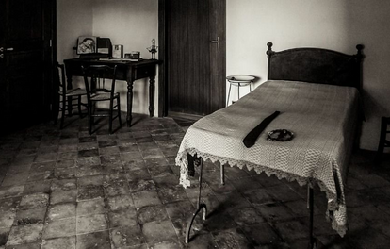
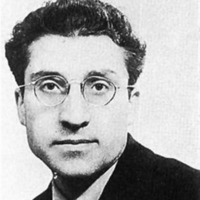
Cesare Pavese (Santo Stefano Belbo, 9 settembre 1908 – Torino, 27 agosto 1950) è stato uno scrittore, poeta, traduttore e critico letterario italiano. Viene considerato uno dei maggiori intellettuali italiani del XX secolo. Biografia L’infanzia Cesare Pavese nacque a Santo Stefano Belbo, un paesino delle Langhe sito nella provincia di Cuneo, presso il cascinale di San Sebastiano, dove la famiglia soleva trascorrere le estati, il 9 settembre del 1908. Il padre, Eugenio Pavese, originario anch’egli di Santo Stefano Belbo, era cancelliere presso il Palazzo di Giustizia di Torino, dove risiedeva con la moglie, Fiorentina Consolina Mesturini, proveniente da una famiglia di abbienti commercianti originari di Ticineto (in provincia di Alessandria), e la primogenita Maria (nata nel 1902), in un appartamento in via XX Settembre 79. Malgrado l’agiatezza economica, l’infanzia di Pavese non fu felice: una sorella e due fratelli, nati prima di lui, erano morti prematuramente. La madre, di salute cagionevole, dovette affidarlo, appena nato, a una balia del vicino paese di Montecucco e poi, quando lo riprese con sé a Torino, a un’altra balia, Vittoria Scaglione. Il padre morì di un cancro al cervello il 2 gennaio del 1914; Cesare aveva cinque anni. Come è stato scritto, «c’erano già tutti i motivi – familiari e affettivi – per far crescere precocemente il piccolo Cesare [...] per una preistoria umana e letteraria che avrebbe accompagnato e segnato la vita dello scrittore». La madre, di carattere autoritario, dovette allevare da sola i due figli: la sua educazione rigorosa contribuì ad accentuare il carattere già introverso e instabile di Cesare. Gli studi Nell’autunno dello stesso 1914, la sorella si ammalò di tifo e la famiglia dovette rimanere a Santo Stefano Belbo, dove Cesare frequentò la prima elementare; le altre quattro classi del ciclo le compì a Torino nell’istituto privato “Trombetta” di via Garibaldi. Come scrive Armanda Guiducci, «S. Stefano fu il luogo della sua memoria e immaginazione; il luogo reale della sua vita, per quarant’anni, fu Torino». Lungo lo stradone che da Santo Stefano Belbo porta a Canelli, nella bottega del falegname Scaglione, Cesare conobbe Pinolo, il più piccolo dei figli del falegname, che descriverà in alcune opere, soprattutto La luna e i falò (come Nuto) e a cui rimarrà sempre legato. Nel 1916 la madre, non riuscendo più a sostenere la gestione dei mezzadri e le spese, decise di vendere la cascina di San Sebastiano e andare a vivere con i figli in una villetta nella località collinare di Reaglie. A Torino Cesare frequentò le scuole medie presso l’Istituto Sociale dei gesuiti, poi si iscrisse al Liceo classico Cavour dove scelse il ginnasio con l’indirizzo moderno (Liceo moderno), che non prevedeva lo studio della lingua greca. Incominciò ad appassionarsi alla letteratura, in particolare ai romanzi di Guido da Verona e di Gabriele D’Annunzio. Con il compagno di studi Mario Sturani incominciò un’amicizia durata tutta la vita e prese a frequentare la Biblioteca Civica, scrivendo i primi versi. Nell’ottobre 1923 Pavese si iscrisse al liceo D’Azeglio e scoprì, in particolare, l’opera di Alfieri. Trascorse gli anni di liceo tra i primi amori adolescenziali e le amicizie, come quella con Tullio Pinelli, cui farà leggere per primo il dattiloscritto di Paesi tuoi e scriverà una lettera prima del suicidio. Cesare rimase a lungo a casa da scuola a causa di una pleurite che si era preso rimanendo a lungo sotto la pioggia per aspettare una cantante ballerina di varietà in un locale frequentato dagli studenti, della quale si era innamorato. Era il 1925 e frequentava la seconda liceo. L’anno seguente fu scosso profondamente dalla tragica morte di un suo compagno di classe, Elico Baraldi, che si era tolto la vita con un colpo di rivoltella. Pavese ebbe la tentazione di emulare quel gesto, come testimonia la poesia inviata il 9 gennaio 1927 all’amico Sturani. Il suo insegnante di italiano e latino fu l’antifascista Augusto Monti, che gli insegnò un metodo rigoroso di studio improntato all’estetica crociana frammista ad alcune concezioni di De Sanctis. Nel 1926, conseguita la maturità liceale, inviò alla rivista “Ricerca di poesia” alcune liriche, che furono però respinte. Si iscrisse intanto alla Facoltà di lettere dell’Università di Torino e continuò a scrivere e a studiare con grande fervore l’inglese, appassionandosi alla lettura di Sherwood Anderson, Sinclar Lewis e soprattutto Walt Whitman, mentre le sue amicizie si allargarono a coloro che diventeranno, in seguito, intellettuali antifascisti di spicco: Leone Ginzburg, Norberto Bobbio, Massimo Mila e Giulio Einaudi. L’interesse per la letteratura americana divenne sempre più rilevante e così incominciò ad accumulare materiale per la sua tesi di laurea, mentre proseguivano i timidi amori permeati dalla sua visione angelicante della donna. Intanto si immergeva sempre più nella vita cittadina, e così scriveva all’amico Tullio Pinelli: Leggendo Babbit di Sinclair Lewis, Pavese volle capire a fondo lo slang. Incominciò così una fitta corrispondenza con un giovane musicista italoamericano, Antonio Chiuminatto, conosciuto qualche anno prima a Torino, che lo aiutò ad approfondire l’americano a lui più contemporaneo. Così scrisse al corrispondente d’oltreoceano: Negli anni successivi, proseguì gli studi con passione, scrisse versi e lesse molto, soprattutto autori americani come Hemingway, Lee Masters, Cummings, Lowell, e la Stein; incominciò a tradurre per l’editore Bemporad Our Mr. Wrenn di Sinclair Lewis e scrisse per Arrigo Cajumi, membro del comitato direttivo della rivista “La Cultura”, il suo primo saggio sull’autore di Babbitt, cominciando così la serie detta Americana. Nel 1930 presentò la sua tesi di laurea “Sulla interpretazione della poesia di Walt Whitman” ma Federico Oliviero, il professore con il quale doveva discuterla, la rifiutò all’ultimo momento perché troppo improntata all’estetica crociana e quindi scandalosamente liberale per l’età fascista. Intervenne però Leone Ginzburg: la tesi venne così accettata dal professore di Letteratura francese Ferdinando Neri e Pavese poté laurearsi con 108/110. L’attività di traduttore e l’insegnamento Nello stesso anno morì la madre e Pavese rimase ad abitare nella casa materna con la sorella Maria, dove visse fino al penultimo giorno della sua vita e incominciò, per guadagnare, l’attività di traduttore in modo sistematico alternandola all’insegnamento della lingua inglese. Per un compenso di 1000 lire tradusse Moby Dick di Herman Melville e Riso nero di Anderson. Scrisse un saggio sullo stesso Anderson e, ancora per “La Cultura”, un articolo sull’Antologia di Spoon River, uno su Melville e uno su O. Henry. Risale a questo stesso anno la prima poesia di Lavorare stanca. Ottenne anche alcune supplenze nelle scuole di Bra, Vercelli e Saluzzo e incominciò anche a impartire lezioni private e a insegnare nelle scuole serali. Nel periodo che va dal settembre 1931 al febbraio 1932 Pavese compose un ciclo di racconti e poesie dal titolo Ciau Masino rimasto a lungo inedito, che verrà pubblicato per la prima volta nel 1968 in edizione fuori commercio e contemporaneamente nel primo volume dei Racconti delle “Opere di Cesare Pavese”. Nel 1933, per poter insegnare nelle scuole pubbliche si arrese, pur malvolentieri, alle insistenze della sorella e di suo marito e si iscrisse al partito nazionale fascista, cosa che rimprovererà più tardi alla sorella Maria in una lettera del 29 luglio 1935 scritta dal carcere di Regina Coeli: “A seguire i vostri consigli, e l’avvenire e la carriera e la pace ecc., ho fatto una prima cosa contro la mia coscienza”. Continuava intanto l’attività di multilingua, che terminò solamente nel 1947. Nel 1933 tradusse Il 42º parallelo di John Dos Passos e Ritratto dell’artista da giovane di James Joyce. Ebbe inizio in questo periodo un tormentato rapporto sentimentale con Tina Pizzardo, la “donna dalla voce rauca” alla quale dedicherà i versi di Incontro nella raccolta Lavorare stanca. L’incarico all’Einaudi Giulio Einaudi aveva intanto fondato la sua casa editrice. Le due riviste, “La riforma sociale” di Luigi Einaudi e “La Cultura”, che era stata concepita da Cesare De Lollis e in quel momento era diretta da Cajumi, si fusero dando vita a una nuova “La Cultura” della quale doveva diventare direttore Leone Ginzburg. Ma molti partecipanti del movimento "Giustizia e Libertà", tra cui anche Ginzburg, all’inizio del 1934 vennero arrestati e la direzione della rivista passò a Sergio Solmi. Pavese, intanto, fece domanda alla casa editrice per poter sostituire Ginzburg e, dal maggio di quell’anno, essendo egli tra i meno compromessi politicamente, incominciò la collaborazione con l’Einaudi dirigendo per un anno “La Cultura” e curando la sezione di etnologia. Sempre nel 1934, grazie alla raccomandazione di Ginzburg, riuscì a inviare ad Alberto Carocci, direttore a Firenze della rivista Solaria, le poesie di Lavorare stanca che vennero lette da Elio Vittorini con parere positivo tanto che Carocci ne decise la pubblicazione. L’arresto e la condanna per antifascismo Nel 1935 Pavese, intenzionato a proseguire nell’insegnamento, si dimise dall’incarico all’Einaudi e incominciò a prepararsi per affrontare il concorso di latino e greco ma, il 15 maggio, una delazione dello scrittore Dino Segre portò agli arresti di intellettuali aderenti a "Giustizia e Libertà", venne fatta una perquisizione nella casa di Pavese, sospettato di frequentare il gruppo di intellettuali a contatto con Ginzburg, e venne trovata, tra le sue carte, una lettera di Altiero Spinelli detenuto per motivi politici nel carcere romano. Accusato di antifascismo, Pavese venne arrestato e incarcerato dapprima alle Nuove di Torino, poi a Regina Coeli a Roma e, in seguito al processo, venne condannato a tre anni di confino a Brancaleone Calabro. Ma Pavese, in realtà, era innocente, poiché la lettera trovata era rivolta a Tina Pizzardo, la “donna dalla voce rauca” della quale era innamorato. Tina era però politicamente impegnata e iscritta al Partito comunista d’Italia clandestino e continuava ad avere contatti epistolari con Spinelli e le lettere pervenivano a casa di Pavese che le aveva permesso di utilizzare il suo indirizzo. Il 4 agosto 1935 Pavese giunse quindi in Calabria, a Brancaleone, e qui scrisse ad Augusto Monti «Qui i paesani mi hanno accolto umanamente, spiegandomi che, del resto, si tratta di una loro tradizione e che fanno così con tutti. Il giorno lo passo “dando volta”, leggicchio, ristudio per la terza volta il greco, fumo la pipa, faccio venir notte; ogni volta indignandomi che, con tante invenzioni solenni, il genio italico non abbia ancora escogitato una droga che propini il letargo a volontà, nel mio caso per tre anni. Per tre anni! Studiare è una parola; non si può niente che valga in questa incertezza di vita, se non assaporare in tutte le sue qualità e quantità più luride la noia, il tedio, la seccaggine, la sgonfia, lo spleen e il mal di pancia. Esercito il più squallido dei passatempi. Acchiappo le mosche, traduco dal greco, mi astengo dal guardare il mare, giro i campi, fumo, tengo lo zibaldone, rileggo la corrispondenza dalla patria, serbo un’inutile castità». Nell’ottobre di quell’anno aveva incominciato a tenere quello che nella lettera al Lajolo definisce lo “zibaldone”, cioè un diario che diventerà in seguito Il mestiere di vivere e aveva fatto domanda di grazia, con la quale ottenne il condono di due anni. Nel 1936, durante il suo confino, venne pubblicata la prima edizione della raccolta poetica Lavorare stanca che, malgrado la forma fortemente innovativa, passò quasi inosservata. Il ritorno a Torino Verso la fine del 1936, terminato l’anno di confino, Pavese fece ritorno a Torino e dovette affrontare la delusione di sapere che Tina stava per sposarsi con un altro e che le sue poesie erano state ignorate. Per guadagnarsi da vivere riprese il lavoro di traduttore e nel 1937 tradusse Un mucchio di quattrini (The Big Money) di John Dos Passos per Mondadori e Uomini e topi di Steinbeck per Bompiani. Dal 1º maggio accettò di collaborare, con un lavoro stabile e per lo stipendio di mille lire al mese, con la Einaudi, per le collane “Narratori stranieri tradotti” e “Biblioteca di cultura storica”, traducendo Fortune e sfortune della famosa Moll Flanders di Defoe e l’anno dopo La storia e le personali esperienze di David Copperfield di Dickens oltre all’Autobiografia di Alice Toklas della Stein. Il passaggio alla prosa Nel frattempo incominciò a scrivere i racconti che verranno pubblicati postumi, dapprima nella raccolta “Notte di festa” e in seguito nel volume de I racconti e fra il 27 novembre del 1936 e il 16 aprile del 1939 completò la stesura del suo primo romanzo breve tratto dall’esperienza del confino intitolato Il carcere (il primo titolo era stato Memorie di due stagioni) che verrà pubblicato dieci anni dopo. Dal 3 giugno al 16 agosto scrisse Paesi tuoi che verrà pubblicato nel 1941 e sarà la prima opera di narrativa dello scrittore data alle stampe. Si andava intanto intensificando, dopo il ritorno dal confino di Leone Ginzburg da Pizzoli, negli Abruzzi, l’attività del gruppo clandestino di "Giustizia e Libertà" e quella dei comunisti con a capo Ludovico Geymonat. Pavese, che era chiaramente antifascista, venne coinvolto e, al di qua di una precisa e dichiarata definizione politica, incominciò ad assistere con crescente interesse alle frequenti discussioni che avvenivano a casa degli amici. Conobbe in questo periodo Giaime Pintor che collaborava ad alcune riviste letterarie ed era inserito alla Einaudi come traduttore dal tedesco e come consulente e nacque tra loro una salda amicizia. Il periodo della guerra Nel 1940 l’Italia era intanto entrata in guerra e Pavese era coinvolto in una nuova avventura sentimentale con una giovane universitaria che era stata sua allieva al liceo D’Azeglio e che gli era stata presentata da Norberto Bobbio. La ragazza, giovane e ricca di interessi culturali, si chiamava Fernanda Pivano e colpì lo scrittore a tal punto che il 26 luglio le propose il matrimonio; malgrado il rifiuto della giovane, l’amicizia continuò. Alla Pivano Pavese dedicò alcune poesie, tra le quali Mattino, Estate e Notturno, che inserì nella nuova edizione di Lavorare stanca. Lajolo scrive che "Per cinque anni Fernanda fu la sua confidente, ed è in lei che Pavese tornò a sperare per avere una casa ed un amore. Ma anche quella esperienza – così diversa – si concluse per lui con un fallimento. Sul frontespizio di Feria d’agosto sono segnate due date: 26 luglio 1940, 10 luglio 1945, che ricordano le due domande di matrimonio fatte a Fernanda, con le due croci che rappresentano il significato delle risposte". In quell’anno Pavese scrisse La bella estate (il primo titolo sarà La tenda), che verrà pubblicato nel 1949 nel volume dal titolo omonimo che comprende anche i romanzi brevi Il diavolo sulle colline e Tra donne sole; tra il 1940 e il 1941 scrisse La spiaggia, che vedrà una prima pubblicazione nel 1942 su “Lettere d’oggi” di Giambattista Vicari. Nel 1941, con la pubblicazione di Paesi tuoi, e quindi l’esordio narrativo di Pavese, la critica sembrò accorgersi finalmente dell’autore. Intanto, nel 1942, Pavese venne regolarmente assunto dalla Einaudi con mansioni di impiegato di prima categoria e con il doppio dello stipendio sulla base del contratto nazionale collettivo di lavoro dell’industria. Nel 1943 Pavese venne trasferito per motivi editoriali a Roma dove gli giunse la cartolina di precetto ma, a causa della forma d’asma di origine nervosa di cui soffriva, dopo sei mesi di convalescenza all’Ospedale militare di Rivoli venne dispensato dalla leva militare e ritornò a Torino che nel frattempo aveva subito numerosi bombardamenti e che trovò deserta dai numerosi amici, mentre sulle montagne si stavano organizzando le prime formazioni partigiane. Nel 1943, dopo l’8 settembre, Torino venne occupata dai tedeschi e anche la casa editrice venne occupata da un commissario della Repubblica sociale italiana. Pavese, a differenza di molti suoi amici che si preparavano alla lotta clandestina, si rifugiò a Serralunga di Crea, piccolo paese del Monferrato, dov’era sfollata la sorella Maria e dove strinse amicizia con il conte Carlo Grillo, che diventerà il protagonista de Il diavolo sulle colline. A dicembre, per sfuggire a una retata da parte dei repubblichini e dei tedeschi, chiese ospitalità presso il Collegio Convitto dei padri Somaschi di Casale Monferrato dove, per sdebitarsi, dava ripetizioni agli allievi. Leggeva e scriveva apparentemente sereno. Il 1º marzo, mentre si trovava ancora a Serralunga, gli giunse la notizia della tragica morte di Leone Ginzburg avvenuta sotto le torture nel carcere di Regina Coeli. Il 3 marzo scriverà: «L’ho saputo il 1º marzo. Esistono gli altri per noi? Vorrei che non fosse vero per non star male. Vivo come in una nebbia, pensandoci sempre ma vagamente. Finisce che si prende l’abitudine a questo stato, in cui si rimanda sempre il dolore vero a domani, e così si dimentica e non si è sofferto». Gli anni del dopoguerra (1945-1950) L’iscrizione al Partito comunista e l’attività a "L’Unità" Ritornato a Torino dopo la liberazione, venne subito a sapere che tanti amici erano morti: Giaime Pintor era stato dilaniato da una mina sul fronte dell’avanzata americana; Luigi Capriolo era stato impiccato a Torino dai fascisti e Gaspare Pajetta, un suo ex allievo di soli diciotto anni, era morto combattendo nella Val d’Ossola. Dapprima, colpito indubbiamente da un certo rimorso, che ben espresse in seguito nei versi del poemetto La terra e la morte e in tante pagine dei suoi romanzi, egli cercò di isolarsi dagli amici rimasti ma poco dopo decise di iscriversi al Partito comunista incominciando a collaborare al quotidiano l’Unità; ne darà notizia da Roma, dove era stato inviato alla fine di luglio per riorganizzare la filiale romana della Einaudi, il 10 novembre all’amico Massimo Mila: «Io ho finalmente regolato la mia posizione iscrivendomi al PCI». Come scrive l’amico Lajolo, «La sua iscrizione al partito comunista oltre ad un fatto di coscienza corrispose certamente anche all’esigenza che sentiva di rendersi degno in quel modo dell’eroismo di Gaspare e degli altri suoi amici che erano caduti. Come un cercare di tacitare i rimorsi e soprattutto di impegnarsi almeno ora in un lavoro che ne riscattasse la precedente assenza e lo ponesse quotidianamente a contatto con la gente... Tentava con quel legame anche disciplinare, di rompere l’isolamento, di collegarsi, di camminare assieme agli altri. Era l’ultima risorsa alla quale si aggrappava per imparare il mestiere di vivere». Nei mesi trascorsi presso la redazione de L’Unità conobbe Italo Calvino, che lo seguì alla Einaudi e ne divenne da quel momento uno dei più stimati collaboratori e Silvio Micheli che era giunto a Torino nel giugno del 1945 per parlare con Pavese della pubblicazione del proprio romanzo Pane duro. Alla sede romana della Einaudi Verso la fine del 1945, Pavese lasciò Torino per Roma dove ebbe l’incarico di potenziare la sede cittadina dell’Einaudi. Il periodo romano, che durò fino alla seconda metà del 1946, fu considerato dallo scrittore come un tempo d’esilio perché staccarsi dall’ambiente torinese, dagli amici e soprattutto dalla nuova attività politica, lo fece ricadere nella malinconia. Nella segreteria della sede romana lavorava una giovane donna, Bianca Garufi, e per lei Pavese provò una nuova passione, più impegnativa dell’idillio con la Pivano, che egli visse intensamente e che lo fece soffrire. Scriverà nel suo diario, il 1º gennaio del 1946, come consuntivo dell’anno trascorso: «Anche questa è finita. Le colline, Torino, Roma. Bruciato quattro donne, stampato un libro, scritte poesie belle, scoperta una nuova forma che sintetizza molti filoni (il dialogo di Circe). Sei felice? Sì, sei felice. Hai la forza, hai il genio, hai da fare. Sei solo. Hai due volte sfiorato il suicidio quest’anno. Tutti ti ammirano, ti complimentano, ti ballano intorno. Ebbene? Non hai mai combattuto, ricordalo. Non combatterai mai. Conti qualcosa per qualcuno?». Nel febbraio del 1946, in collaborazione con Bianca Garufi, a capitoli alterni, incominciò a scrivere un romanzo che rimarrà incompiuto e che sarà pubblicato postumo nel 1959 con il titolo, scelto dall’editore, di Fuoco grande. A Torino: la Collezione di studi religiosi, etnologici e psicologici Ritornato a Torino si mise a lavorare su quei temi delineatisi nella mente quando era a Serralunga. Incominciò a comporre i Dialoghi con Leucò e nell’autunno, mentre stava terminando l’opera, scrisse i primi capitoli de Il compagno con il quale volle testimoniare l’impegno per una precisa scelta politica. Terminati i Dialoghi, in attesa della pubblicazione del libro che avvenne a fine novembre nella collana “Saggi”, tradusse Capitano Smith di Robert Henriques. Il 1947 fu un anno intenso per l’attività editoriale e Pavese s’interessò particolarmente della Collezione di studi religiosi, etnologici e psicologici da lui ideata con la collaborazione di Ernesto De Martino, una collana che fece conoscere al mondo culturale italiano le opere di autori come Lévy-Bruhl, Malinowski, Propp, Frobenius, Jung, e che avrebbero dato avvio a nuove teorie antropologiche. Oltre a ciò, Pavese inaugurò anche la nuova collana di narrativa dei “Coralli” che era nata in quello stesso anno in sostituzione dei “Narratori contemporanei”. La febbrile attività narrativa Tra il settembre del 1947 e il febbraio del 1948, contemporaneamente a Il compagno, scrisse La casa in collina che uscì l’anno successivo insieme con Il carcere nel volume Prima che il gallo canti il cui titolo, ripreso dalla risposta di Cristo a Pietro, si riferisce, con tono palesemente autobiografico ai suoi tradimenti politici. Seguirà, tra il giugno e l’ottobre del 1948 Il diavolo sulle colline. Nell’estate del 1948 gli era stato intanto assegnato, per Il compagno, il Premio Salento, ma Pavese aveva scritto all’amico Carlo Muscetta di dimissionarlo da qualsiasi premio letterario, presente o futuro. Alla fine dell’anno uscì Prima che il gallo canti, che venne subito elogiato dai critici Emilio Cecchi e Giuseppe De Robertis. Dal 27 marzo al 26 maggio del 1949 scrisse Tra donne sole e, al termine del romanzo, andò a trascorrere una settimana a Santo Stefano Belbo e, in compagnia dell’amico Pinolo Scaglione, a suo agio tra quelle campagne, incominciò a elaborare quella che sarebbe diventata La luna e i falò, l’ultima sua opera pubblicata in vita. Il 24 novembre 1949 venne pubblicato il trittico La bella estate che comprendeva i già citati tre romanzi brevi composti in periodi diversi: l’eponimo del 1940, Il diavolo sulle colline del 1948 e Tra donne sole del 1949. Sempre nel 1949, scritto nel giro di pochi mesi e pubblicato nella primavera del 1950, scrisse La luna e i falò che sarà l’opera di narrativa conclusiva della sua carriera letteraria. A Roma: amore, l’ultimo Dopo essere stato per un brevissimo tempo a Milano, fece un viaggio a Roma dove si trattenne dal 30 dicembre del 1949 al 6 gennaio del 1950, ma rimase deluso: il 1º gennaio scriveva sul suo diario: In questo stato d’animo conobbe in casa di amici Constance Dowling, giunta a Roma con la sorella Doris, che aveva recitato in Riso amaro con Vittorio Gassman e Raf Vallone, e, colpito dalla sua bellezza, se ne innamorò. Ritornando a Torino, cominciò a pensare che, ancora una volta, si era lasciato sfuggire l’occasione, e quando Constance si recò a Torino per un periodo di riposo, i due si rividero e la donna lo convinse ad andare con lei a Cervinia, dove Pavese s’illuse di nuovo. Constance infatti aveva una relazione con l’attore Andrea Checchi e ripartì presto per l’America per tentare fortuna a Hollywood, lasciando lo scrittore amareggiato e infelice. A Constance, come per un addio, dedicò il romanzo La luna e i falò: «For C.– Ripeness is all». Il Premio Strega Nella primavera-estate del 1950 uscì la rivista Cultura e realtà; Pavese, che faceva parte della redazione, aprì il primo numero della rivista con un suo articolo sul mito, nel quale affermava la sua fede poetica di carattere vichiano, la quale non venne apprezzata dagli ambienti degli intellettuali comunisti. Cesare venne attaccato e, sempre più amareggiato, annotò nel suo diario il 15 febbraio «Pavese non è un buon compagno... Discorsi d’intrighi dappertutto. Losche mene, che sarebbero poi i discorsi di quelli che ti stanno più a cuore», e ancora il 20 maggio: «Mi sono impegnato nella responsabilità politica che mi schiaccia.» Pavese era terribilmente depresso e neppure riuscì a risollevarlo il Premio Strega che ricevette nel giugno del 1950 per La bella estate; in quella occasione fu accompagnato da Doris Dowling, sorella dell’amata Constance. La morte Nell’estate 1950 trascorse alcuni giorni a Bocca di Magra, vicino a Sarzana, in Liguria, meta estiva di molti intellettuali, dove conobbe un’allora diciottenne Romilda Bollati, sorella dell’editore Giulio Bollati, appartenente alla nobile famiglia dei Bollati di Saint-Pierre (e futura moglie prima dell’imprenditore Attilio Turati poi del ministro Antonio Bisaglia). I due ebbero una breve storia d’amore, come testimoniano i manoscritti dello scrittore, che la chiamava con lo pseudonimo di “Pierina”. Tuttavia, nemmeno questo nuovo sentimento riuscì a dissipare la sua depressione; in una lettera dell’agosto 1950, scriveva: Il 17 agosto aveva scritto sul diario, pubblicato nel 1952 con il titolo Il mestiere di vivere. Diario 1935-1950: «Questo il consuntivo dell’anno non finito, che non finirò» e il 18 agosto aveva chiuso il diario scrivendo: «Tutto questo fa schifo. Non parole. Un gesto. Non scriverò più».In preda a un profondo disagio esistenziale, tormentato dalla recente delusione amorosa con Constance Dowling, alla quale dedicò i versi di Verrà la morte e avrà i tuoi occhi, mise prematuramente fine alla sua vita il 27 agosto del 1950, in una camera dell’albergo Roma di Piazza Carlo Felice a Torino, che aveva occupato il giorno prima. Venne trovato disteso sul letto dopo aver ingerito più di dieci bustine di sonnifero. Sulla prima pagina dei Dialoghi con Leucò, che si trovava sul tavolino aveva scritto: «Perdono tutti e a tutti chiedo perdono. Va bene? Non fate troppi pettegolezzi». All’interno del libro era inserito un foglietto con tre frasi vergate da lui: una citazione dal libro, «L’uomo mortale, Leucò, non ha che questo d’immortale. Il ricordo che porta e il ricordo che lascia», una dal proprio diario, «Ho lavorato, ho dato poesia agli uomini, ho condiviso le pene di molti», e «Ho cercato me stesso». Qualche giorno dopo si svolsero i funerali civili, senza commemorazioni religiose poiché suicida e ateo. Opera e poetica Importante fu l’opera di Pavese scrittore di romanzi, poesie e racconti, ma anche quella di traduttore e critico: oltre all’Antologia americana curata da Elio Vittorini, essa comprende la traduzione di classici della letteratura da Moby Dick di Melville, nel 1932, a opere di Dos Passos, Faulkner, Defoe, Joyce e Dickens. Nel 1951 uscì postumo, edito da Einaudi e con la prefazione di Italo Calvino il volume La letteratura americana e altri saggi con tutti i saggi e gli articoli che Pavese scrisse tra il 1930 e il 1950. La sua attività di critico in particolare contribuì a creare, verso la metà degli anni trenta, il sorgere di un certo “mito dell’America”. Lavorando nell’editoria (per la Einaudi) Pavese propose alla cultura italiana scritti su temi differenti, e prima d’allora raramente affrontati, come l’idealismo e il marxismo, inclusi quelli religiosi, etnologici e psicologici. Opere L’elenco è in ordine cronologico in base alla data di pubblicazione delle rispettive prime edizioni. Poiché molti testi furono pubblicati anni dopo essere stati composti, dove opportuno sono segnalate le date di composizione. Raccolte * Racconti, 3 voll., Torino, Einaudi, 1960. [Contiene i racconti editi in Feria d’agosto e Notte di festa con l’aggiunta di frammenti di racconti e racconti inediti] * Tutti i romanzi, a cura di Marziano Guglielminetti, Torino, Einaudi, 2000. ISBN 88-446-0079-X. Tutti i racconti, a cura di Mariarosa Masoero, introduzione di Marziano Guglielminetti, Torino, Einaudi, 2002. ISBN 88-446-0081-1. [Contiene i già editi Racconti, e Ciau Masino, e altri testi già inseriti a partire dall’ed. del 1968 dell’opera omnia. Romanzi e racconti * Paesi tuoi, Torino, Einaudi, 1941. [romanzo] * Prima che il gallo canti, Torino, Einaudi, 1948. [Contiene i romanzi Il carcere, scritto nel 1938-1939, e La casa in collina] * La spiaggia, in “Lettere d’oggi”, a. III, nn. 7-8, 1941; poi in volume, Roma, Ed. Lettere d’oggi, 1942; Torino, Einaudi, 1956. [romanzo breve] * Feria d’agosto, Torino, Einaudi, 1946. [racconti] * Dialoghi con Leucò, Torino, Einaudi, 1947. [racconti: conversazioni a due tra personaggi mitologici] * Il compagno, Torino, Einaudi, 1947. [romanzo] * La casa in collina, Torino, Einaudi, 1948. [romanzo] * La bella estate, Torino, Einaudi, 1949. [Contiene i romanzi: La bella estate (1940), Il diavolo sulle colline e Tra donne sole] * La luna e i falò, Torino, Einaudi, 1950. [romanzo] * Notte di festa, Torino, Einaudi, 1953. [racconti] * Fuoco grande, scritto a capitoli alterni con Bianca Garufi, Torino, Einaudi, 1959. [romanzo incompiuto] * Ciau Masino, Torino, Einaudi, 1968. * Lotte di giovani e altri racconti (1925-1930), a cura di Mariarosa Masoero, Collana Nuovi Coralli, Torino, Einaudi, 1993, ISBN 978-88-061-3200-2. Poesie * Lavorare stanca, Firenze, Solaria, 1936; ed. ampliata con le poesie dal 1936 al 1940, Torino, Einaudi, 1943. La terra e la morte, in “Le tre Venezie”, nn. 4-5-6, 1947; nuova edizione postuma, in Verrà la morte e avrà i tuoi occhi, Torino, Einaudi, 1951; compreso anche in Poesie edite e inedite, a cura di Italo Calvino, Torino, Einaudi, 1962. [9 poesie] * Verrà la morte e avrà i tuoi occhi, Torino, Einaudi, 1951. [10 poesie inedite e quelle incluse in La terra e la morte] * Poesie del disamore e altre poesie disperse, Torino, Einaudi, 1962. [Contiene: Poesie del disamore, Verrà la morte e avrà i tuoi occhi, poesie escluse da Lavorare stanca, poesie del 1931‑1940 e due del 1946] * Poesie edite e inedite, a cura di Italo Calvino, Torino, Einaudi, 1962. [Contiene: Lavorare stanca, La terra e la morte, Verrà la morte e avrà i tuoi occhi e 29 poesie inedite] * 8 poesie inedite e quattro lettere a un’amica (1928-1929), Milano, All’insegna del pesce d’oro, 1964. * Poesie giovanili, 1923-30, a cura di Attilio Dughera e Mariarosa Masoero, Torino, Einaudi, 1989. Saggi e diari * La letteratura americana e altri saggi, Torino, Einaudi, 1951. [saggi e articoli 1930-1950] * Il mestiere di vivere. Diario 1935-1950, Torino, Einaudi, 1952; nuova edizione condotta sull’autografo a cura di Marziano Guglielminetti e Laura Nay, Einaudi, 1990. ISBN 88-06-11863-3. * Interpretazione della poesia di Walt Whitman. Tesi di laurea, 1930, a cura di Valerio Magrelli, Torino, Einaudi, 2006. [edizione di 1000 esemplari numerati] * Dodici giorni al mare. [Un diario inedito del 1922], a cura di Mariarosa Masoero, Genova, Galata, 2008. ISBN 978-88-95369-04-4. * Il quaderno del confino, a cura di Mariarosa Masoero, Alessandria, Edizioni dell’Orso, 2010. ISBN 978-88-6274-184-2. Sceneggiature * Il diavolo sulle colline; Gioventù crudele, in “Cinema Nuovo”, settembre-ottobre 1959. [soggetti cinematografici] * Il serpente e la colomba. Scritti e soggetti cinematografici, a cura di Mariarosa Masoero, introduzione di Lorenzo Ventavoli, Torino, Einaudi, 2009. ISBN 978-88-06-19800-8. Epistolari * Lettere 1924-1950I, Lettere 1924-1944, a cura di Lorenzo Mondo, Torino, Einaudi, 1966. * II, Lettere 1945-1950, a cura di Italo Calvino, Torino, Einaudi, 1966.Vita attraverso le lettere, a cura di Lorenzo Mondo, Torino, Einaudi, 1973. * C. Pavese-Ernesto De Martino, La collana viola. Lettere 1945-1950, A cura di Pietro Angelini, Torino, Bollati Boringhieri, 1991, ISBN 978-88-339-0529-7. * Officina Einaudi. Lettere editoriali, 1940-1950, a cura di Silvia Savioli, Torino, Einaudi, 2008. ISBN 978-88-06-19352-2. * C. Pavese-Felice Balbo-Natalia Ginzburg, Lettere a Ludovica [Nagel], A cura di Carlo Ginzburg, Milano, Archinto, 2008, ISBN 978-88-776-8517-9. * C. Pavese-Renato Poggioli, «A Meeting of minds». Carteggio (1947-1950), A cura di S. Savioli, Alessandria, Edizioni dell’Orso, 2010, ISBN 978-88-627-4219-1. * Una bellissima coppia discorde. Il carteggio tra Cesare Pavese e Bianca Garufi 1945-1950, a cura di Mariarosa Masoero, Collana Saggi e testi n.20, Firenze, Olschki, 2011, ISBN 978-88-222-6074-1. Traduzioni * Sinclair Lewis, Il nostro signor Wrenn. Storia di un gentiluomo romantico, Firenze, Bemporad, 1931. * Herman Melville, Moby Dick o La balena, Torino, Frassinelli, I ed. 1932; II ed. riveduta, Frassinelli, 1941. * Sherwood Anderson, Riso nero, Torino, Frassinelli, 1932. * James Joyce, Dedalus. Ritratto dell’artista da giovane, Torino, Frassinelli, 1933. * John Dos Passos, Il 42º parallelo, Milano, A. Mondadori, 1934. * John Dos Passos, Un mucchio di quattrini, Milano, A. Mondadori, 1938. * John Steinbeck, Uomini e topi, Milano, Bompiani, 1938. * Gertrude Stein, Autobiografia di Alice Toklas, Torino, Einaudi, 1938. * Daniel Defoe, Fortune e sfortune della famosa Moll Flanders, Torino, Einaudi, 1938. * Charles Dickens, David Copperfield, Torino, Einaudi, 1939. * Christopher Dawson, La formazione dell’unità europea. Dal secolo V al secolo XI, Torino, Einaudi, 1939. * George Macaulay Trevelyan, La rivoluzione inglese del 1688-89, Torino, Einaudi, 1940. * Herman Melville, Benito Cereno, Torino, Einaudi, 1940. * Gertrude Stein, Tre esistenze, Torino, Einaudi, 1940. * Christopher Morley, Il cavallo di Troia, Milano, Bompiani, 1941. * William Faulkner, Il borgo, Milano, A. Mondadori, 1942. * Robert Henriques, Capitano Smith, Torino, Einaudi, 1947. * La Teogonia di Esiodo e Tre Inni omerici, a cura di Attilio Dughera, Collezione di poesia, Torino, Einaudi, 1982. [versione redatta negli anni 1947-1948] * Percy Bysshe Shelley, Prometeo slegato, A cura di Mark Pietralunga, Collezione di poesia n.260, Torino, Einaudi, 1997. [versione redatta nel 1925] * Quinto Orazio Flacco, Le Odi, A cura di Giovanni Barberi Squarotti, Collana Saggi e testi n.21, Firenze, Olschki, 2013, ISBN 978-88-222-6243-1. [versione redatta nel 1926] Francesca Belviso, Amor Fati. Pavese all’ombra di Nietzsche. La volontà di potenza nella traduzione di Cesare Pavese, Introduzione di Angelo D’Orsi, Torino, Aragno, 2016, ISBN 978-88-841-9772-6. [contiene in appendice la versione parziale dell’opera del filosofo tedesco: condotta tra il 1945-1946, fu rifiutata da Einaudi] Riferimenti Wikipedia – https://it.wikipedia.org/wiki/Cesare_Pavese
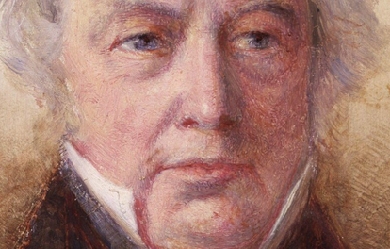
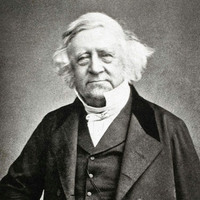
Thomas Love Peacock (18 October 1785– 23 January 1866) was an English novelist, poet, and official of the East India Company. He was a close friend of Percy Bysshe Shelley and they influenced each other’s work. Peacock wrote satirical novels, each with the same basic setting: characters at a table discussing and criticising the philosophical opinions of the day. Background and education Peacock was born in Weymouth, Dorset, the son of Samuel Peacock and his wife Sarah Love, daughter of Thomas Love a retired master of a man-of-war in the Royal Navy. His father was a glass merchant in London, partner of a Mr Pellatt, presumed to be Apsley Pellatt (1763–1826). Peacock went with his mother to live with her family at Chertsey in 1791 and in 1792 went to a school run by Joseph Harris Wicks at Englefield Green where he stayed for six and a half years. Peacock’s father died in 1794 in “poor circumstances” leaving a small annuity. Peacock’s first known poem was an epitaph for a school fellow written at the age of ten and another on his Midsummer Holidays was written when he was thirteen. Around that time in 1798 he was abruptly taken from school and from then on was entirely self-educated. Early occupation and travelling In February 1800, Peacock became a clerk with Ludlow Fraser Company, who were merchants in the City of London. He lived with his mother on the firm’s premises at 4 Angel Court Throgmorton Street. He won the eleventh prize from the Monthly Preceptor for a verse answer to the question “Is History or Biography the More Improving Study?”. He also contributed to “The Juvenile Library”, a magazine for youth whose competitions excited the emulation of several other boys including Leigh Hunt, de Quincey, and W. J. Fox. He began visiting the Reading Room of the British Museum and continued doing so for many years, diligently studying the best literature in Greek, Latin, French, and Italian. In 1804 and 1806 he published two volumes of poetry, The Monks of St. Mark and Palmyra. Some of Peacock’s juvenile compositions were privately printed by Sir Henry Cole. In around 1806 Peacock left his job in the city and during the year made a solitary walking tour of Scotland. The annuity left by his father expired in October 1806. In 1807 he returned to live at his mother’s house at Chertsey. He was briefly engaged to Fanny Faulkner, but it was broken off through the interference of her relations. His friends, as he hints, thought it wrong that so clever a man should be earning so little money. In the autumn of 1808 he became private secretary to Sir Home Popham, commanding the fleet before Flushing. By the end of the year he was serving Captain Andrew King aboard HMS Venerable in the Downs. His preconceived affection for the sea did not reconcile him to nautical realities. “Writing poetry”, he says, “or doing anything else that is rational, in this floating inferno, is next to a moral impossibility. I would give the world to be at home and devote the winter to the composition of a comedy”. He did write prologues and addresses for dramatic performances on board HMS Venerable. His dramatic taste then and for the next nine years resulted in attempts at comedies and lighter pieces, all of which lacked ease of dialogue and over-elaborated incident and humour. He left HMS Venerable in March 1809 at Deal and walked around Ramsgate in Kent before returning home to Chertsey. He had sent his publisher Edward Hookham a little poem of the River Thames which he expanded during the year into “The Genius of the Thames”. On 29 May he set out on a two-week expedition to trace the course of the Thames from its source to Chertsey and spent two or three days staying in Oxford. Peacock travelled to North Wales in January 1810 where he visited Tremadog and settled at Maentwrog in Merionethshire. At Maentwrog he was attracted to the parson’s daughter Jane Gryffydh, whom he referred to as the “Caernavonshire nymph”. Early in June 1810, the Genius of the Thames was published by Thomas and Edward Hookham. Early in 1811 he left Maentwrog to walk home via South Wales. He climbed Cadair Idris and visited Edward Scott at Bodtalog near Tywyn. His journey included Aberystwyth and Devil’s Bridge, Ceredigion. Later in 1811, his mother’s annuity expired and she had to leave Chertsey and moved to Morven Cottage Wraysbury near Staines with the help of some friends. In 1812 they had to leave Morven Cottage over problems paying tradesmen’s bills. Friendship with Shelley In 1812 Peacock published another elaborate poem, The Philosophy of Melancholy, and in the same year made the acquaintance of Shelley. He wrote in his memoir of Shelley, that he “saw Shelley for the first time just before he went to Tanyrallt”, whither Shelley proceeded from London in November 1812 (Hogg’s Life of Shelley, vol. 2, pp. 174, 175.) Thomas Hookham, the publisher of all Peacock’s early writings, was possibly responsible for the introduction. It was Hookham’s circulating library which Shelley used for many years, and Hookham had sent The Genius of the Thames to Shelley, and in the Shelley Memorials, pp. 38–40, is a letter from the poet dated 18 August 1812, extolling the poetical merits of the performance and with equal exaggeration censuring what he thought the author’s misguided patriotism. Peacock and Shelley became friends and Peacock influenced Shelley’s fortunes both before and after his death. In the winter of 1813 Peacock accompanied Shelley and his first wife Harriet to Edinburgh. Peacock was fond of Harriet, and in his old age defended her reputation from slanders spread by Jane, Lady Shelley, the daughter-in-law of Shelley’s second wife Mary. In 1814 Peacock published a satirical ballad, Sir Proteus, which appeared under the pseudonym “P. M. O’Donovan, Esq.” Shelley resorted to him during the agitation of mind which preceded his separation from Harriet. After Shelley deserted Harriet, Peacock became an almost daily visitor throughout the winter of 1814–15 of Shelley and Mary Godwin (later Mary Shelley), at their London lodgings. In 1815 Peacock shared their voyage to the source of the Thames. “He seems”, writes Charles Clairmont, Mary Godwin’s stepbrother and a member of the party, “an idly-inclined man; indeed, he is professedly so in the summer; he owns he cannot apply himself to study, and thinks it more beneficial to him as a human being entirely to devote himself to the beauties of the season while they last; he was only happy while out from morning till night”. By September 1815 when Shelley had taken up residence at Bishopsgate, near Windsor, Peacock had settled at Great Marlow. Peacock wrote Headlong Hall in 1815, and it was published the following year. With this work Peacock found the true field for his literary gift in the satiric novel, interspersed with delightful lyrics, amorous, narrative, or convivial. During the winter of 1815–16 Peacock was regularly walking over to visit Shelley at Bishopgate. There he met Thomas Jefferson Hogg, and “the winter was a mere Atticism. Our studies were exclusively Greek”. In 1816 Shelley went abroad, and Peacock appears to have been entrusted with the task of finding the Shelleys a new residence. He fixed them near his own home at Great Marlow. Peacock received a pension from Shelley for a time, and was put into requisition to keep off wholly unauthorised intruders upon Shelley’s hospitable household. Peacock was consulted about alterations in Shelley’s Laon and Cythna, and Peacock’s enthusiasm for Greek poetry probably had some influence on Shelley’s work. Shelley’s influence upon Peacock may be traced in the latter’s poem of Rhododaphne, or the Thessalian Spell, published in 1818 and Shelley wrote a eulogistic review of it. Peacock also wrote at this time the satirical novels Melincourt published in 1817 and Nightmare Abbey published in 1818. Shelley made his final departure for Italy and the friends’ agreement for mutual correspondence produced Shelley’s magnificent descriptive letters from Italy, which otherwise might never have been written. Peacock told Shelley that “he did not find this brilliant summer,” of 1818, “very favourable to intellectual exertion;” but before it was quite over “rivers, castles, forests, abbeys, monks, maids, kings, and banditti were all dancing before me like a masked ball.” He was at this time writing his romance of Maid Marian which he had completed except for the last three chapters. East India Company At the beginning of 1819, Peacock was unexpectedly summoned to London for a period of probation with the East India Company who needed to reinforce their staff with talented people. They summoned to their service in the Examiner’s office James Mill and three others. Peacock was included at the recommendation of Peter Auber, the company historian, whom he had known at school, though probably not as a school-fellow. Peacock’s test papers earned the high commendation, “Nothing superfluous and nothing wanting.” On 13 January 1819, he wrote from 5 York Street, Covent Garden: "I now pass every morning at the India House, from half-past 10 to half-past 4, studying Indian affairs. My object is not yet attained, though I have little doubt but that it will be. It was not in the first instance of my own seeking, but was proposed to me. It will lead to a very sufficing provision for me in two or three years. It is not in the common routine of office, but is an employment of a very interesting and intellectual kind, connected with finance and legislation, in which it is possible to be of great service, not only to the Company, but to the millions under their dominion.” On 1 July 1819 Peacock slept for the first time in a house at 18 Stamford Street, Blackfriars which, “as you might expect from a Republican, he has furnished very handsomely.” His mother continued to live with him in Stamford Street. In 1820 Peacock contributed to Ollier’s Literary Pocket Book and wrote The Four Ages of Poetry, the latter of which argued that poetry’s relevance was being eclipsed by science, a claim which provoked Shelley’s Defence of Poetry. The official duties of the India House delayed the completion and publication of Maid Marian, begun in 1818, until 1822, and as a result of the delay it was taken for an imitation of Ivanhoe although its composition had, in fact, preceded Scott’s novel. It was soon dramatised with great success by Planché, and was translated into French and German. Peacock’s salary was now £1000 a year, and in 1823 he acquired a country residence at Lower Halliford, near Shepperton, Middlesex, constructed out of two old cottages, where he could gratify the love of the Thames, which was as strong as his enthusiasm for classical literature. In the winter of 1825–26 he wrote Paper Money Lyrics and other Poems “during the prevalence of an influenza to which the beautiful fabric of paper-credit is periodically subject.” In his early time at the India Office he wrote little except for the operatic criticisms which he regularly contributed to The Examiner, and an occasional article in the Westminster Review or Bentley’s Miscellany. Peacock showed great ability in business and in the drafting of official papers. In 1829 he began to devote attention to steam navigation, and drew up a memorandum for General Chesney’s Euphrates expedition, which was praised both by Chesney and Lord Ellenborough. He opposed the employment of steamers on the Red Sea, probably in deference to the supposed interests of the company. In 1829 he published The Misfortunes of Elphin founded upon Welsh traditions, and in 1831 Crotchet Castle, the most mature and thoroughly characteristic of all his works. He was greatly affected by the death of his mother in 1833 and said himself that he never wrote anything with interest afterwards. Peacock often appeared before parliamentary committees as the company’s champion. In this role in 1834, he resisted James Silk Buckingham’s claim to compensation for his expulsion from the East Indies, and in 1836, he defeated the attack of the Liverpool merchants and Cheshire manufacturers upon the Indian salt monopoly. In 1836 his official career was crowned by his appointment as Chief Examiner of Indian Correspondence, in succession to James Mill. The post was one which could only be filled by someone of sound business capacity and exceptional ability in drafting official documents: and Peacock’s discharge of its duties, it is believed, suffered nothing by comparison either with his distinguished predecessor or his still more celebrated successor, Stuart Mill. In 1837 appeared his Paper Money Lyrics and other Poems of which only one hundred copies were printed. Also in 1837, Headlong Hall, Nightmare Abbey, Maid Marian, and Crotchet Castle appeared together as vol. 57 of Bentley’s Standard Novels. In 1839 and 1840 Peacock superintended the construction of iron steamers which rounded the Cape, and took part in the Chinese war. Peacock’s occupation seems to have principally lain with finance, commerce, and public works. He wrote a light poem on “A Day at the India Office”:— From ten to eleven, have breakfast for seven; From eleven to noon, think you’ve come too soon; From twelve to one, think what’s to be done; From one to two, find nothing to do; From two to three, think it will be A very great bore to stay till four. In about 1852 towards the end of Peacock’s service in the India office, his taste or leisure for authorship returned, and he began to contribute to Fraser’s Magazine in which appeared his entertaining and scholarly Horæ Dramaticæ, a restoration of the Querolus, a Roman comedy probably of the time of Diocletian, and his reminiscences of Shelley. Later life Peacock retired from the India House on 29 March 1856 with an ample pension. In his retirement he seldom left Halliford and spent his life among his books, and in the garden, in which he took great pleasure, and on the River Thames. In 1860 he still showed vigour by the publication in Fraser’s Magazine of Gryll Grange, his last novel. In the same year he added the appendix of Shelley’s letters and there could be no question of the extreme value of this. His last writings were two translations, Gl’ Ingannati (The Deceived) a comedy, performed at Siena in 1861 and Ælia Lælia Crispis of which a limited edition was circulated in 1862. Peacock died at Lower Halliford, 23 January 1866, from injuries sustained in a fire in which he had attempted to save his library, and is buried in the new cemetery at Shepperton. His granddaughter remembered him in these words: In society my grandfather was ever a welcome guest, his genial manner, hearty appreciation of wit and humour in others, and the amusing way in which he told stories made him a very delightful acquaintance; he was always so agreeable and so very witty that he was called by his most intimate friends the “Laughing Philosopher”, and it seems to me that the term “Epicurean Philosopher”, which I have often heard applied to him, describes him accurately and briefly. In public business my grandfather was upright and honourable; but as he advanced in years his detestation of anything disagreeable made him simply avoid whatever fretted him, laughing off all sorts of ordinary calls upon his leisure time. Sir Edward Strachey wrote of him A kind-hearted, genial, friendly man, who loved to share his enjoyment of life with all around him, and self-indulgent without being selfish. Richard Garnett in the Dictionary of National Biography described Peacock as a rare instance of a man improved by prosperity; an element of pedantry and illiberality in his earlier writings gradually disappears in genial sunshine, although, with the advance of age, obstinate prejudice takes its place, good humoured, but unamenable to argument. The vigour of his mind is abundantly proved by his successful transaction of the uncongenial commercial and financial business of the East India Company; and his novels, their quaint prejudices apart, are almost as remarkable for their good sense as for their wit. But for this penetrating sagacity, constantly brought to bear upon the affairs of life, they would seem mere humorous extravaganzas, being farcical rather than comic, and almost entirely devoid of plot and character. They overflow with merriment from end to end, though the humour is frequently too recondite to be generally appreciated, and their style is perfect. They owe much of their charm to the simple and melodious lyrics with which they are interspersed, a striking contrast to the frigid artificiality of Peacock’s more ambitious attempts in poetry. As a critic, he was sensible and sound, but neither possessed nor appreciated the power of his contemporaries, Shelley and Keats, to reanimate classical myths by infusion of the modern spirit. Family Peacock married Jane Griffith or Gryffydh in 1820. In his “Letter to Maria Gisborne”, Shelley referred to Jane as “the milk-white Snowdonian Antelope.” Peacock had four children, a son Edward who was a champion rower, and three daughters. One of them, Mary Ellen, married the novelist George Meredith as her second husband in August 1849. Only his son survived him, and he for less than a year, but he left several grandchildren. Jane Peacock died in 1865. Works * Peacock’s own place in literature is pre-eminently that of a satirist. That he has nevertheless been the favourite only of the few is owing partly to the highly intellectual quality of his work, but mainly to his lack of ordinary qualifications of the novelist, all pretension to which he entirely disclaims. He has no plot, little human interest, and no consistent delineation of character. His personages are mere puppets, or, at best, incarnations of abstract qualities such as grace or beauty, but beautifully depicted. * His comedy combines the mock-Gothic with the Aristophanic. He suffers from that dramatist’s faults and, though not as daring in invention or as free in the use of sexual humour, shares many of his strengths. His greatest intellectual love is for Ancient Greece, including late and minor works such as the Dionysiaca of Nonnus; many of his characters are given punning names taken from Greek to indicate their personality or philosophy. * He tended to dramatize where traditional novelists narrated; he is more concerned with the interplay of ideas and opinions than of feelings and emotions; his dramatis personae is more likely to consist of a cast of more or less equal characters than of one outstanding hero or heroine and a host of minor auxiliaries; his novels have a tendency to approximate the Classical unities, with few changes of scene and few if any subplots; his novels are novels of conversation rather than novels of action; in fact, Peacock is so much more interested in what his characters say to one another than in what they do to one another that he often sets out entire chapters of his novels in dialogue form. Plato’s Symposium is the literary ancestor of these works, by way of the Deipnosophists of Athenaeus, in which (as in much of Peacock) the conversation relates less to exalted philosophical themes than to the points of a good fish dinner. Novels * Headlong Hall (published 1815 but dated 1816) [lightly revised, 1837] * Melincourt (1817) * Nightmare Abbey (1818) [lightly revised, 1837] * Maid Marian (1822) * The Misfortunes of Elphin (1829) * Crotchet Castle (1831) [lightly revised, 1837] * Gryll Grange (1861) [serialised first in 1860] Verse * The Monks of St. Mark (1804?) * Palmyra and other Poems (1805) * The Genius of the Thames: a Lyrical Poem (1810) * The Genius of the Thames Palmyra and other Poems (1812) * The Philosophy of Melancholy (1812) * Sir Hornbook, or Childe Launcelot’s Expedition (1813) * Sir Proteus: a Satirical Ballad (1814) * The Round Table, or King Arthur’s Feast (1817) * Rhododaphne: or the Thessalian Spirit (1818) * Paper Money Lyrics (1837) * The War-Song of Dinas Vawr Essays * The Four Ages of Poetry (1820) * Recollections of Childhood: The Abbey House (1837) * Memoirs of Shelley (1858–62) * The Last Day of Windsor Forest (1887) [composed 1862] * Prospectus: Classical Education Plays * The Three Doctors * The Dilettanti * Gl’Ingannati, or The Deceived (translated from the Italian, 1862) Unfinished tales and novels * Satyrane (c. 1816) * Calidore (c. 1816) * The Pilgrim of Provence (c. 1826) * The Lord of the Hills (c. 1835) * Julia Procula (c. 1850) * A Story Opening at Chertsey (c. 1850) * A Story of a Mansion among the Chiltern Hills (c. 1859) * Boozabowt Abbey (c. 1859) * Cotswald Chace (c. 1860) References Wikipedia—https://en.wikipedia.org/wiki/Thomas_Love_Peacock
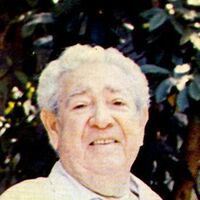
Carlos Manuel Puebla (1917 - 1989) fue un cantautor cubano. Conocido como el cantor de la revolución al utilizar sus habilidades musicales para la difusión de los valores de la Revolución Cubana, cantando los hechos más relevantes y siendo cronista de los cambios acaecidos desde 1959. Sus canciones siempre fueron realizadas en un lenguaje directo. Identificándose el propio Carlos como miembro del pueblo y salpicando sus composiciones de humor criollo. La creación más popular de Carlos Puebla es, sin duda, la dedicada a Ernesto "Che" Guevara, titulada Hasta siempre, y que ha sido traducida y cantada en muchos idiomas y estilos. Soy del pueblo, pueblo soy y a donde me lleve el pueblo voy por el pueblo voy pasando y oyendo sus sentimientos, los recojo y al momento se los devuelvo cantando" Niñez y juventud Nació en Manzanillo, Cuba, el 11 de septiembre de 1917 en el seno de una familia humilde. Se vio obligado a ejercer durante su niñez y juventud múltiples oficios: carpintero, mecánico, obrero azucarero y zapatero. Su temperamento le empujaba al mundo de la música. Cuando iba a la escuela no abandonaba su armónica, que hacia sonar por el camino. La clases de guitarra que recibía su hermana eran seguidas por él a escondidas y repetidas luego; ese carácter autodidacta le impulsó a aprender. Utilizando métodos de enseñanza a distancia como el para aprender a tocar la guitarra sin maestro y consultando a Pedro Estacio (director de la Banda Municipal de Conciertos de Manzanillo) y Juan García (maestro de piano) dio los primeros pasos de aprendizaje musical. En los 30 del siglo XX sus canciones ya se emitían en la radio local de Manzanillo, la CMKM. En este tiempo los temas de su música son de corte romántico, canciones que fueron grandes éxitos y que han pasado a formar parte del patrimonio de la música cubana. Algunas de ellas son: Quiero hablar contigo, Qué sé yo, Te vieron con él, Cuenta conmigo, Quién se lo iba a imaginar, Hay que decir adiós y Dejemos de fingir. Poco después comenzaría a grabar sus discos; en estas piezas ya se empiezan a tratar temas sociales y reivindicativos. Canciones como: Plan de machete, Este es mi pueblo y Pobre de mi Cuba denunciaban la situación que se vivía en Cuba por aquella época sin temer a la represión. Justo antes de la revolución En los años 50 se acompaña por el grupo Los Tradicionales (Santiago Martínez, Pedro Sosa y Rafael Lorenzo), publicándose sus trabajos bajo el nombre de Carlos Puebla y Sus Tradicionales. Su presencia en la radio y en la televisión nacionales se hace habitual. Aunque su escenario más querido en aquellos tiempos era el restaurante habanero de La bodeguita del medio donde interpretaba su obra sin cobrar ningún salario pero reconfortado en el buen ambiente allí existente. Tal como él mismo dice: (...) pasaba los ratos cantando con la barriga llena y el corazón contento. Este lugar le sirvió para conocer a otros muchos artistas e importantes personalidades. Y en eso llegó Fidel El 1º de enero de 1959 el triunfo de la revolución, iconizada con la entrada de Fidel en La Habana, influiría en la vida de Carlos Puebla tanto como en la de Cuba. Carlos se convierte en cronista. La guaracha Y en eso llegó Fidel es, tal como dice el título, un cambio en su creación, en su obra. Pasa a realizar canciones que tiene como destino el difundir los valores revolucionarios y las decisiones del gobierno de los barbudos. Canciones como La Reforma Agraria, Duro con él, Ya ganamos la pelea, Son de la alfabetización van haciendo de Carlos Puebla el embajador de la obra revolucionaria. En su canción De Cuba traigo un cantar muestra bien claro este papel de embajador que adopta. De Cuba traigo un cantar hecho de palma y de sol cantar de la vida nueva y del trabajo creador para el ensueño mejor cantar para la esperanza para la luz y el amor... En 1961 realiza lo que sería la primera gira por varios países que culmina con un gran éxito. Esto daría pie a muchas más giras, que extenderían su prestigio y fama desde el ámbito cubano a más de 35 países. En todas estas actuaciones está acompañado de los Tradicionales. En aquella época se le empezó a llamar Juglar de la Era Moderna. El éxito no fue motivo para olvidar sus orígenes. Volvía siempre que podía a su ciudad natal y no dejaba de participar en la celebración de las Semanas de la Cultura y las Jornadas de Homenaje a su amigo, el poeta Manuel Navarro Luna. En Manzanillo no dejaba de pasear por toda la ciudad y de actuar allí donde se lo pidieran. Su sitio preferido, como no podía ser de otra manera era La casa de la Trova, que hoy lleva su nombre, donde pasaba horas con sus amigos cantando y compartiendo su bebida predilecta, el Ron Pinilla. La partida de Ernesto Guevara, a seguir la lucha revolucionaria en otras tierras, impactó a Carlos Puebla de tal forma que la misma noche en que Fidel Castro dio a conocer la carta de despedida del argentino, Carlos, sin poder dormir, compusó su obra más conocida, Hasta siempre que se convertiría en un himno homenaje al heroico guerrillero que transcendería a todos los estilos de música y a casi todas las lenguas. Su muerte Una larga enfermedad terminó con su vida un 12 de julio de 1989. Para entonces su obra musical era inmensa. Había escrito más de setenta temas donde, con su característico sentido del humor, relata los temas más comunes y transcendentes. La enfermedad no pudo minar su sentido jovial. Su muerte se produjo en La Habana, y su tumba se encuentra en el cementerio de su ciudad de origen, Manzanillo, y en ella se puede leer: q\yo soy esto que soy un simple trovador que canta Discografía * 1969 - Y diez años van EP * 1971 - Ojo con la CIA / Todos los caminos Colectivos * 1971 - Saludo cubano Obra póstuma * 1997 - Cantarte Comandante * 1997 - La novia del feeling * 1997 - Toda una vida *1998 - Hasta siempre *1999 - Dos voces de América en un canto a Cuba * 1999 - Soy del pueblo * 2001 - Mis cincuenta preferidas. Vol. III * 2004 - El gran tesoro de la música cubana. Vol. IV * 2004 - Rebeldes Colectivos *1997 - ¡El Che vive! Referencias Wikipedia-http://es.wikipedia.org/wiki/Carlos_Puebla
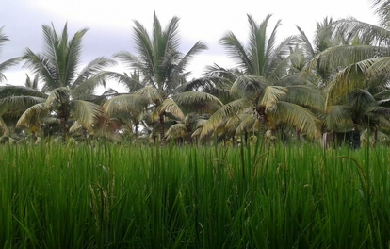
.jpg)
Escribo versos libres desde los 18 años. En la actualidad a mis 22 años, llevo conmigo unas 16 poesías que seguirán creciendo en número mientras tenga vida, porque ganas de escribir no me faltan. Casi siempre describo felices o desgarradoras historias de amor adolescente y de mi vida personal. Me gustaría trabajar próximamente en poemas de contenido social.

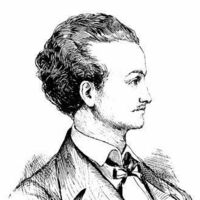
Gabriel de la Concepción Valdés, o “Plácido” (seudónimo con el cual firmó su obra), tal vez haya sido el poeta de mayor aceptación popular entre los escritores cubanos del siglo XIX. Versificador espontáneo como pocos antes o después, algunos críticos lo consideran entre los iniciadores del criollismo y también del siboneyismo en la lírica cubana. Normalmente se le incluye entre los románticos cubanos, donde sinceramente corresponde de acuerdo al período, pero gran parte de la obra de Plácido es mucho más alegre, sin dejar de ser fina, y carente del exceso romántico. Como dijo Lezama Lima -“Fue la alegría de la casa, de la fiesta, de la guitarra y de la noche melancólica. Tenía la llave que abría la puerta de lo fiestero y aéreo.” Indudablemente, capturó al verdadero espíritu cubano en sus versos. Plácido escribió muchos poemas de carácter popular y para las fiestas familiares también fueron muchas las improvisaciones que redactó. Algunos críticos han caracterizado estas obras como vulgares, cuando en realidad exponían la vida cotidiana de aquellos años en Cuba como sólo los criollos lograron hacerlo. Otros aun reclaman que no debe ser incluido en la literatura afrocubana ya que su obra es muy refinada, semejándose demasiado a la de los blancos. Irónico que su obra también haya sido juzgada con el mismo perjuicio que fue su piel. Eso es lo que quería decir ser mulato en la isla durante los años de Gabriel de la Concepción Valdés: no ser aceptado ni por los de la raza blanca, ni por los de la casta negra. Es cierto que las poesías de Plácido no tienen la perfección ni la profundidad ideológica de Heredia o Milanés. Mas sin embargo, la versificación es tan natural que algunos de sus poemas eran escuchados cien años más tarde en las calles de La Habana, repetidos de memoria en muchos casos sin saber el declamador quien era el autor. En el siglo XIX Plácido fue el poeta de mayor aceptación y divulgación en Cuba, y en la literatura cubana uno de los de mayor sensibilidad. Fueron muchas las poesías de Plácido que recibieron halagos por sus contemporáneos y otros poetas posteriores. Entre otras unas de las más reconocidas son Jicotencal, A Una Ingrata, La Flor del Café, La Flor de Caña, La Flor de la Piña. Se comenta que durante sus últimos días, en la cárcel, compuso Plegaria a Dios y que cuando era dirigido del calabozo al lugar de su fusilamiento iba declamando esta poesía. Si desea consultar una selección algo más amplia, por favor visite Algunas Poesías de Gabriel de la Concepción Valdés donde iremos añadiendo más obras de este poeta cubano. ¿Quién fue Gabriel de la Concepción Valdés? El 18 de marzo nace Diego Gabriel de la Concepción Valdés en la ciudad de La Habana. Su madre, Concepción Vázquez, era bailarina española natural de Burgos. Su padre, Diego Ferrer Matoso, era peluquero de nacionalidad cubana y raza negra. De unos días de nacido, la madre dejó a Plácido en la Casa Cuna o Real Casa de Beneficencia y Maternidad de la Habana. El apellido “Valdés” se le fue dado, al igual que a todos los otros niños allí bautizados, en honor al Obispo Valdés, fundador de la Casa Cuna. El nombre Gabriel de la Concepción, Concepción de la madre, se dice que estaba escrito en una nota que acompañaba al niño al ser dejado en la Casa Cuna. Algunas referencias indican que tal nota se limitaba a “Nació el 18 de Marzo de 1809” otras la exponen a también incluir “... y se llama Gabriel de la Concepción”. El nombre del padre, Diego, se dice que estaba en la partida de bautismo; donde aparece el nombre del capitán de Milicias D. Joaquín de Cárdenas como padrino, que aparentemente en realidad lo fue Plácido Fuentes. Su padre lo adoptó y mantuvo hasta que tenía unos diez años, más tarde lo dio a criar a la abuela paterna del niño. Existen diferentes percepciones con respecto al acto de la madre hacia el bebito. Hay quienes estiman que le abandonó debido a los rigores de su trabajo. Otros piensan, lo cual tiene considerable peso, que no lo abandonó, sólo lo dejó en la Casa de Beneficencia para que el padre lo pudiera adoptar legalmente y criar en un ambiente mucho más familiar de lo que ella podía proveer. Creció en la pobreza, con todos los perjuicios de ser mulato en una colonia donde existía la esclavitud. Acudió a algunos colegios durante su niñez, aunque no fue una educación continua o estable. Después de su padre partir hacia México, de donde no regresó, ingresó como estudiante en el taller de Vicente Escobar aprendiendo allí dibujo y caligrafía. Dos años más tarde, en 1823, comenzó a trabajar como aprendiz de tipógrafo en la imprenta de José Severino Boloñá. Ya sus dotes de poetas se habían dado a ver, mas fue en la imprenta, donde expuesto a la poesía, surge la inspiración que le acompañaría hasta su muerte. Pero había que comer y tuvo que dejar la imprenta para dedicarse a labrar peinetas de carey, trabajo más lucrativo en aquellos tiempos. Fue serio en sus relaciones amorosas. Por desgracia de la vida no llegó a casarse con Rafaela, apodada “Fe”, al morir ella durante el noviazgo. Pocos años después, en 1836, contrajo matrimonio con Celia, no durando mucho estos vínculos. En 1842 volvió a casarse, con María Gil Ramona Morales. Su niñez transcurrió en la Habana. Se traslado a la ciudad de Matanzas en 1826 donde trabajó haciendo peinetas de carey. El resto de su vida lo desarrolló en temporadas entre estas dos ciudades. Al menos en una ocasión trató de establecerse en la provincia de Las Villas, pero tuvo que regresar a Matanzas. En una de sus temporadas en Matanzas, fue visitado por Heredia. Hecho de por sí que descalifica toda la publicidad negativa de algunos críticos. Se rumora que Heredia lo invitó a irse con él a México. Lo cierto es que el gran poeta fue a ver a Plácido específicamente y lo trató como poeta y cubano igual a él. Ya desde el comienzo de la década de 1840 las cosas estaban calientes en Cuba y Gabriel de la Concepción Valdés sufrió cierta persecución, llegando a estar preso al menos en una circunstancia. Eventualmente el 28 de Junio de 1844 fue fusilado en Matanzas habiendo sido acusado de ser uno de los integrantes en la Conspiración de la Escalera. Referencias Damisela - www.damisela.com/literatura/pais/cuba/autores/placido/index.htm
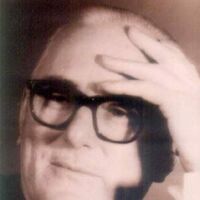
Don José Ternura César Isella a José Pedroni Debió ser el oro tibio de los trigales; ese vaivén de cuna mecida por el viento, el eco lejano de las nanas de las madres del mundo, las que le dieron a José Pedroni ese acento de intimidad inviolada para su poesía inicial. Sus primeros libros tenían un temblOr de nacimiento. Un misterio de salmo, el trasfondo bíblico que anima su palabra llena de labradores, los constructores de la Colonia Esperanza, donde él vio y cantó la epopeya, hasta él inédita, de la inmigración en la Argentina. Con el correr del tiempo, los asuntos urgentes de un mundo castigado por la gUerra y el horror iban a estremecer sus poemas, hasta recalar en la épica del despertar de los pueblos latinoamericanos en la última etapa de su obra extensa y fresca. Esa riqueza de temas y formas, es el que despertado la inquietud de los compositores jóvenes que, como César Isella, están convirtendo sus hojas voladoras en pájaros sonoros. ¿Habrá pensado alguna vez don José, que sus poemas iban a ser invadidos por las guitarras del pueblo? Seguramente que sí, porque segura era la entraña popular nacional de esa poesía. Aquí en esta nueva obra del ya famoso cantante y autor, la música agranda su mensaje y nos devuelve un Pedroni vigente y urgente que pondera el camino de un cancionero apoyado en la gran poesia argentina. José Bartolomé Pedroni Fantino (21 de septiembre de 1899–, 4 de febrero de 1968), poeta argentino. José Pedroni nació en la ciudad de Gálvez, Santa Fe, en Argentina, hijo de Gaspar Pedroni y de Felisa Fantino. Sin embargo, su lugar de residencia durante la mayor parte de su vida fue la ciudad de Esperanza, en la misma provincia de Santa Fe, su ciudad adoptiva y en la cual escribe la mayor parte de su obra poética. Contrajo matrimonio con Elena Chautemps el 27 de marzo de 1920. Tuvieron cuatro hijos. Su última hija y única hija mujer, Ana María Pedroni, también es escritora y reside en Guatemala. Su muerte, ocurrida por una descompensación cardíaca, lo sorprende en la ciudad de Mar del Plata, provincia de Buenos Aires, Argentina en 1968. Esperanza, colonia de inmigrantes europeos Esperanza, la ciudad por él elegida, es una colonia de inmigrantes de origen suizo, alemán, francés, belga y luxemburgués, fundada en el año 1856, el 8 de septiembre. Sobre esa gesta colonizadora y sus protagonistas el poeta se expresa en su libro "Monsieur Jaquín", editado en 1956 al celebrarse el Centenario de la fundación de la ciudad de Esperanza. Obra poética Sus primeros poemas los publica en 1920 y entre su fecunda obra poética corresponde destacar "La gota de agua" (1923), "Gracia plena" (1925), "Poemas y palabras" (1935), "Diez Mujeres" (1937), "El pan nuestro" (1941), "Nueve cantos" (1944), "Monsieur Jaquín" (1956), "Cantos del hombre" y "Canto a Cuba" (1960),"La hoja voladora" (1961) y "El nivel y su lágrima" (1963). Centenario de su nacimiento Siempre ha sido considerado como la figura literaria máxima de la ciudad santafesina de Esperanza, cuya comunidad lo ha homenajeado y recordado en múltiples ocasiones. En 1999, en oportunidad de cumplirse el Centenario de su nacimiento, el 21 de septiembre, una Comisión de Homenaje realiza diferentes actividades para recordar al poeta. Cabe destacar una publicación especial del periódico "El Colono del Oeste" de Esperanza, elaborada por la Profesora Nelly Morandi de Müller que relata su vida a través de su propia obra poética, enriqueciendo el relato con múltiples imágenes fotográficas que reflejan diferentes etapas de la vida de José Pedroni, provenientes de su colección privada y que fueron aportadas por la familia del poeta. Referencias Wikipedia - http://es.wikipedia.org/wiki/José_Pedroni Folklore Raíz - http://folklore-raiz.blogspot.com.es/2012/09/cesar-isella-1972-jose-pedroni.html



